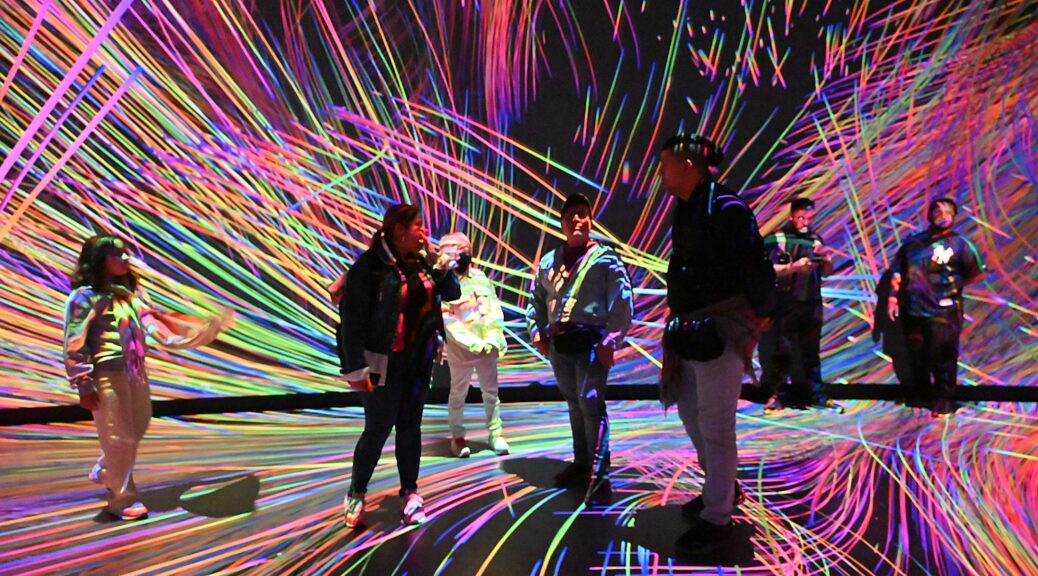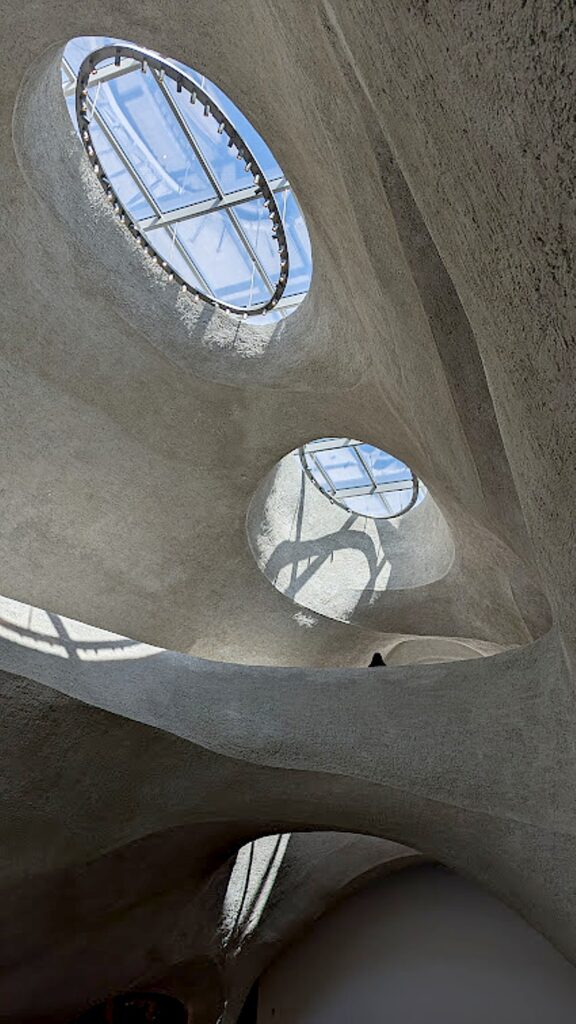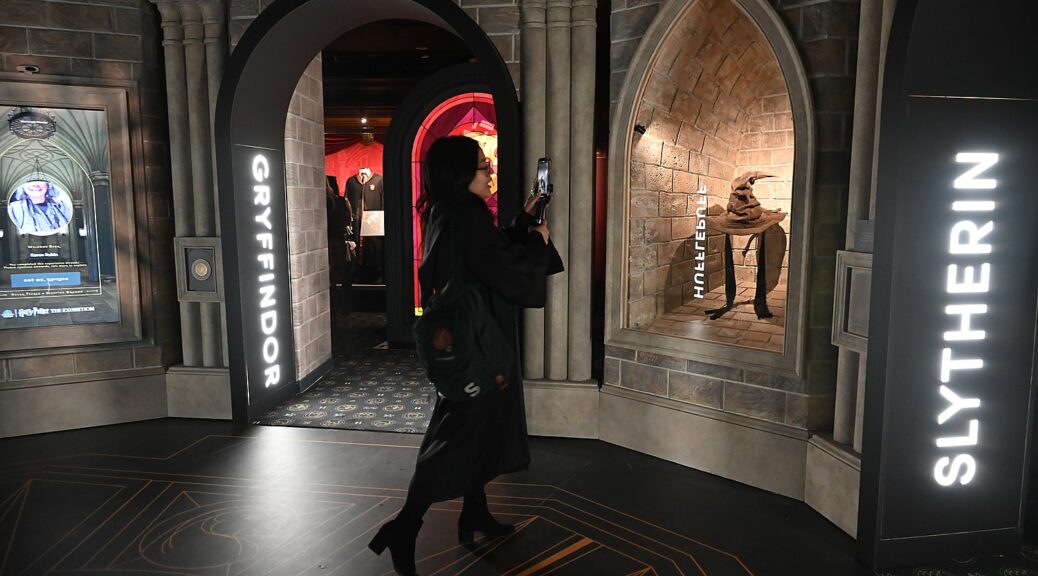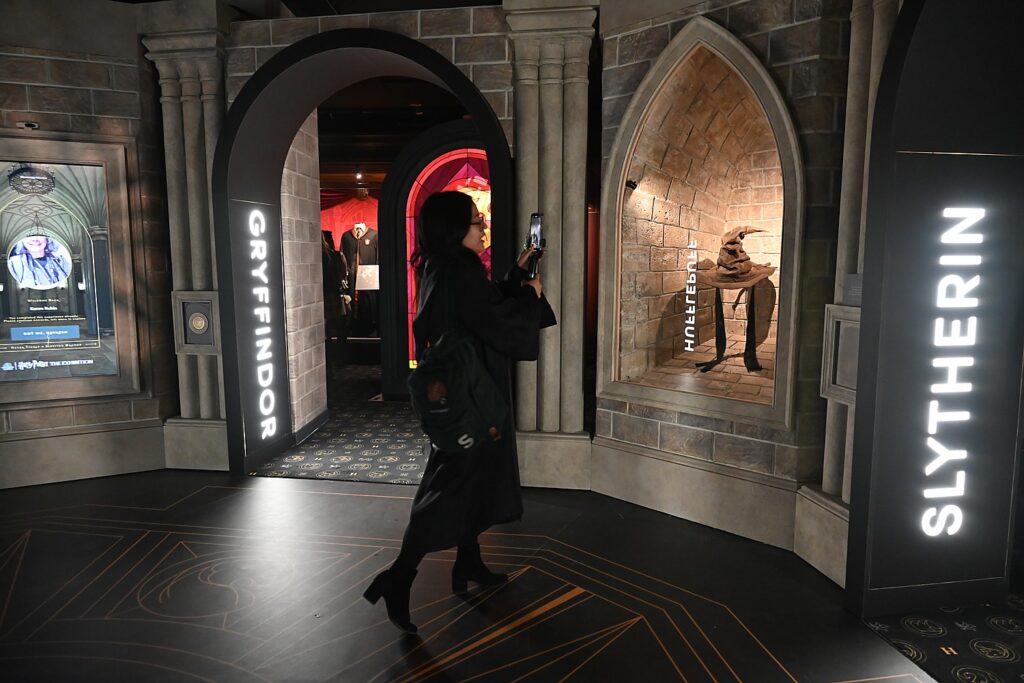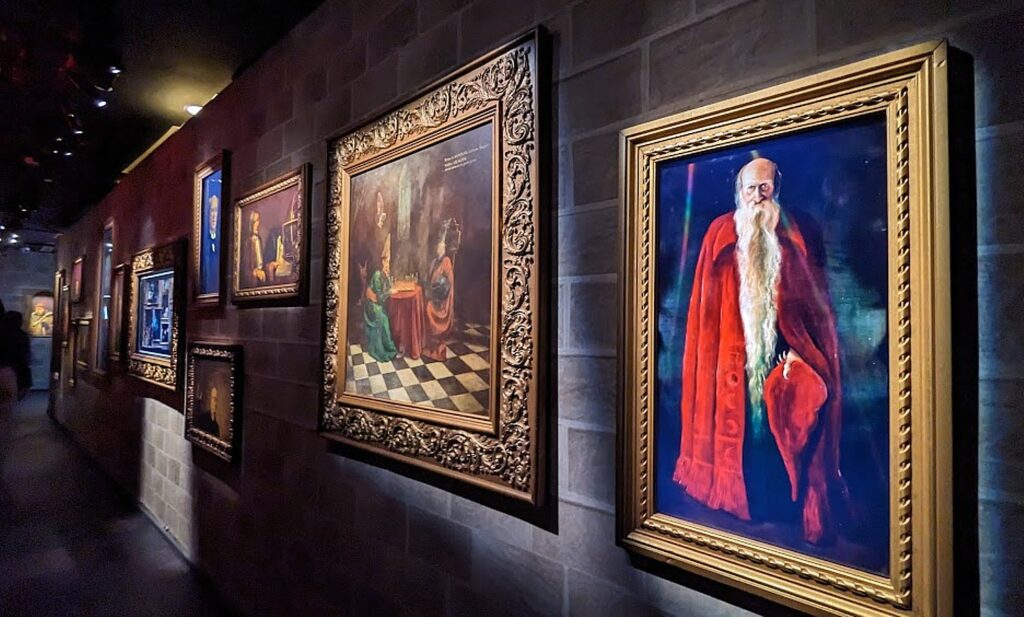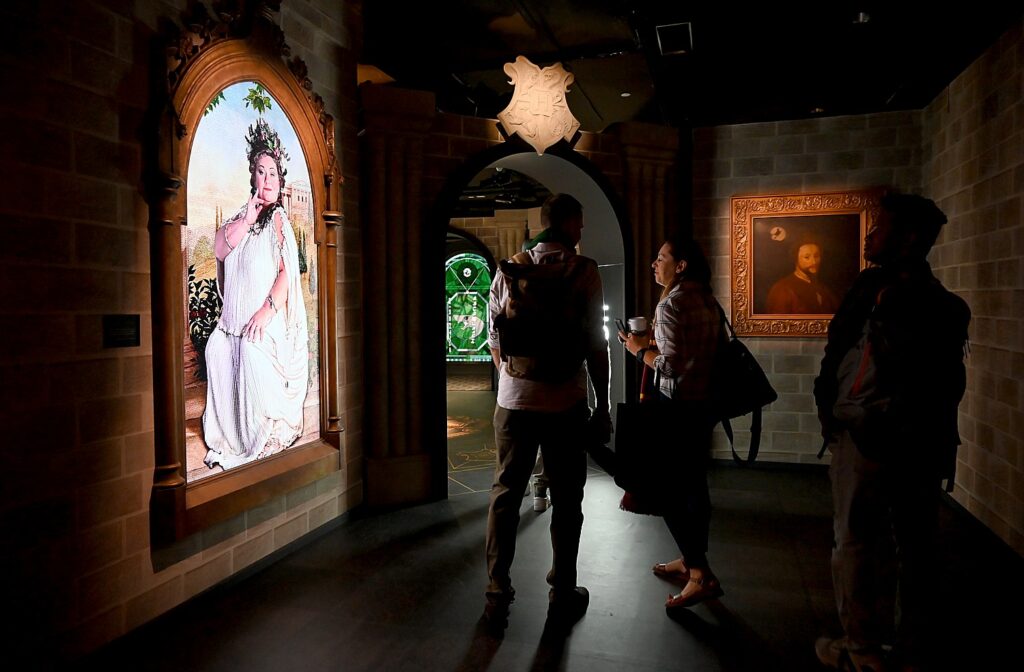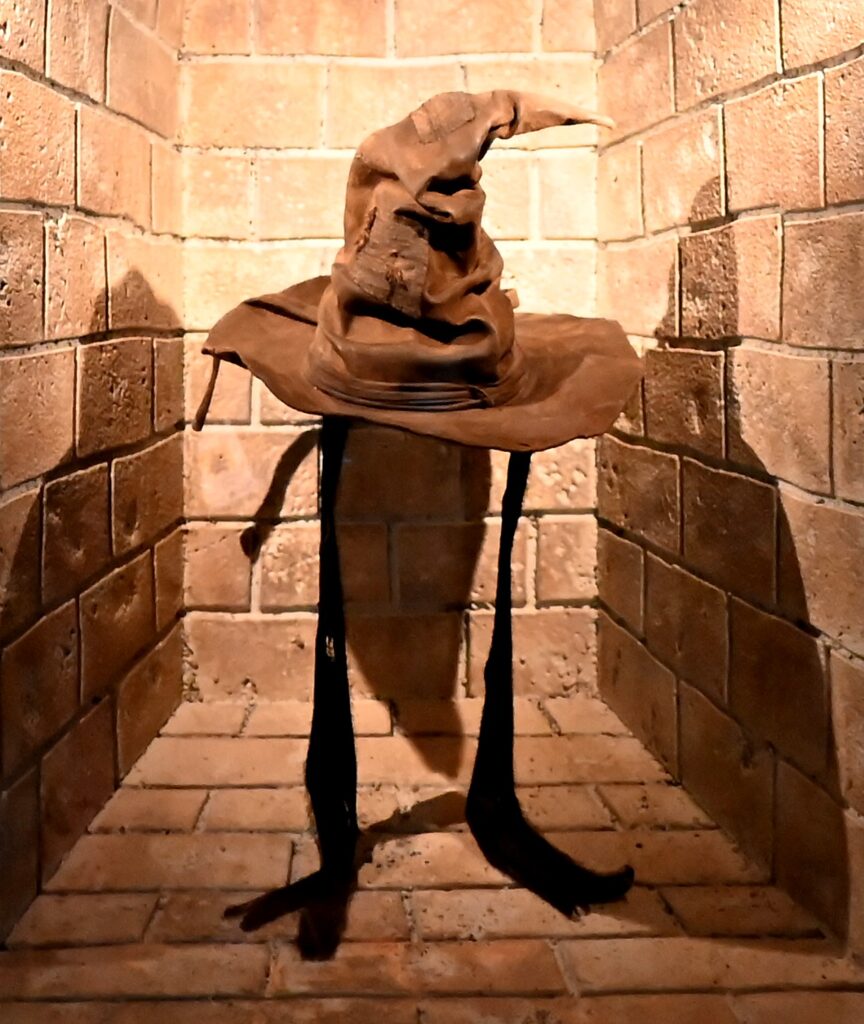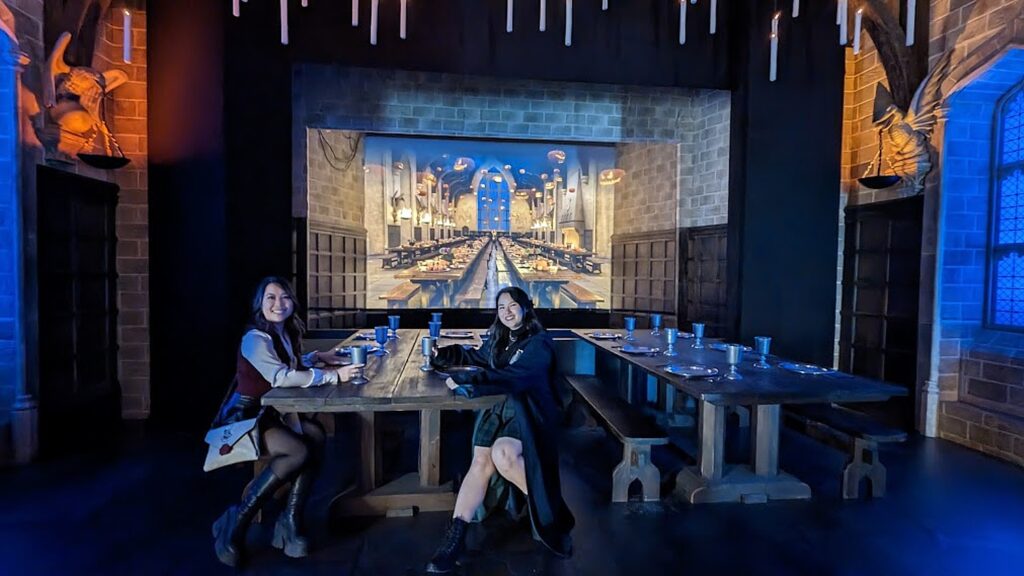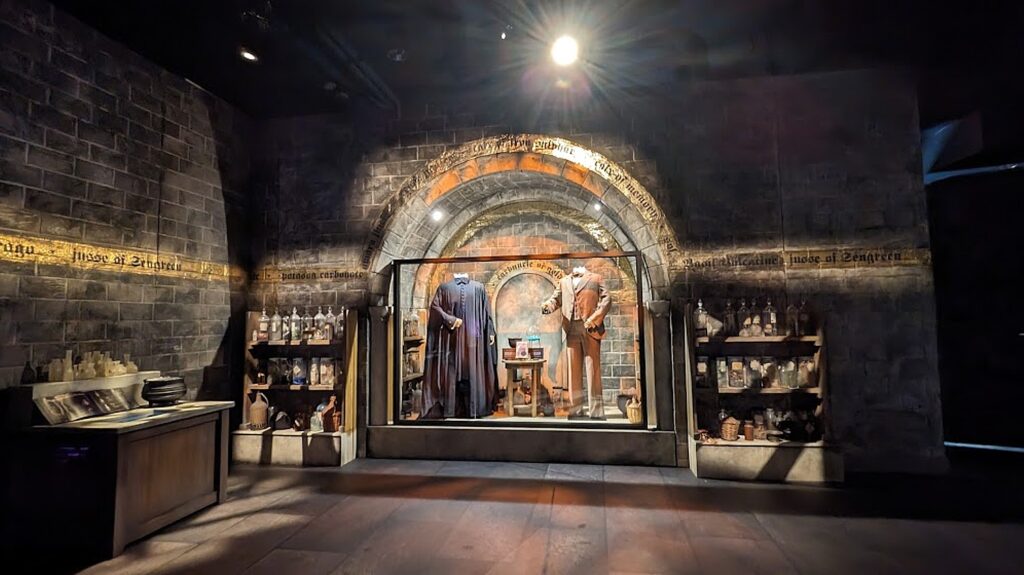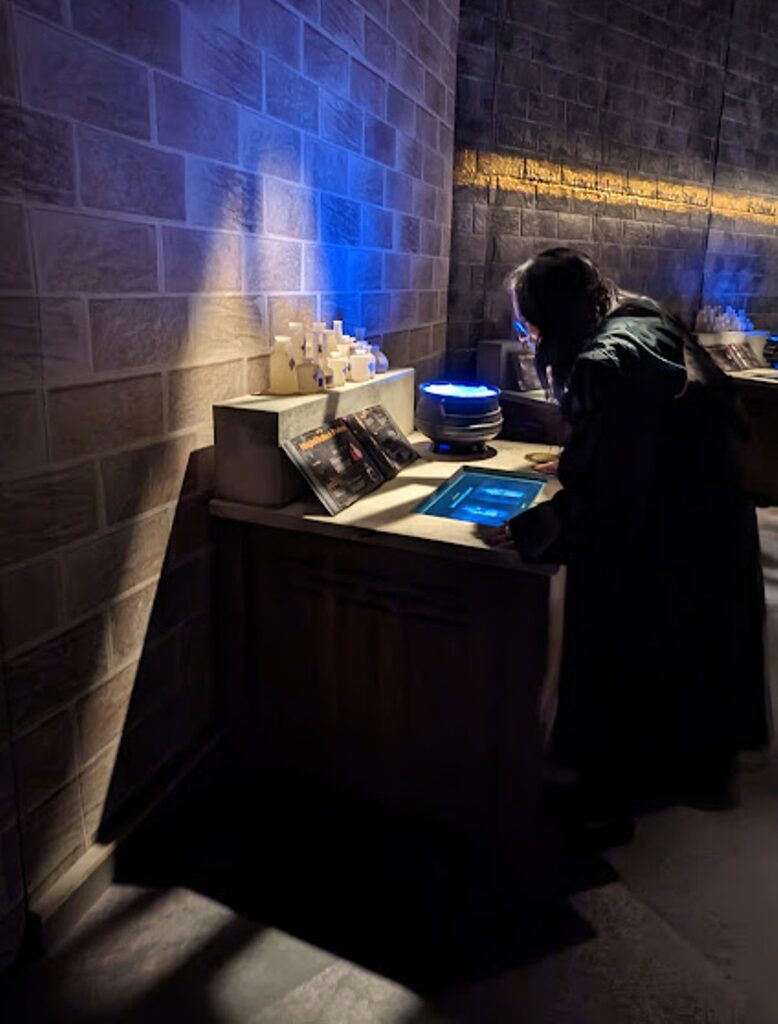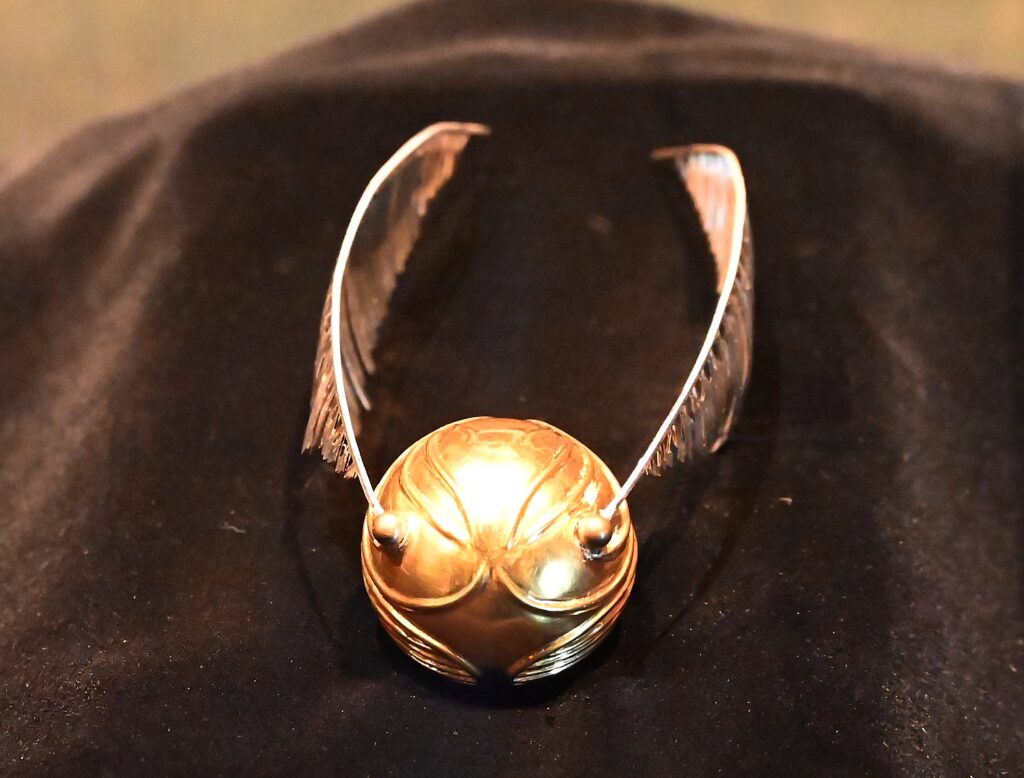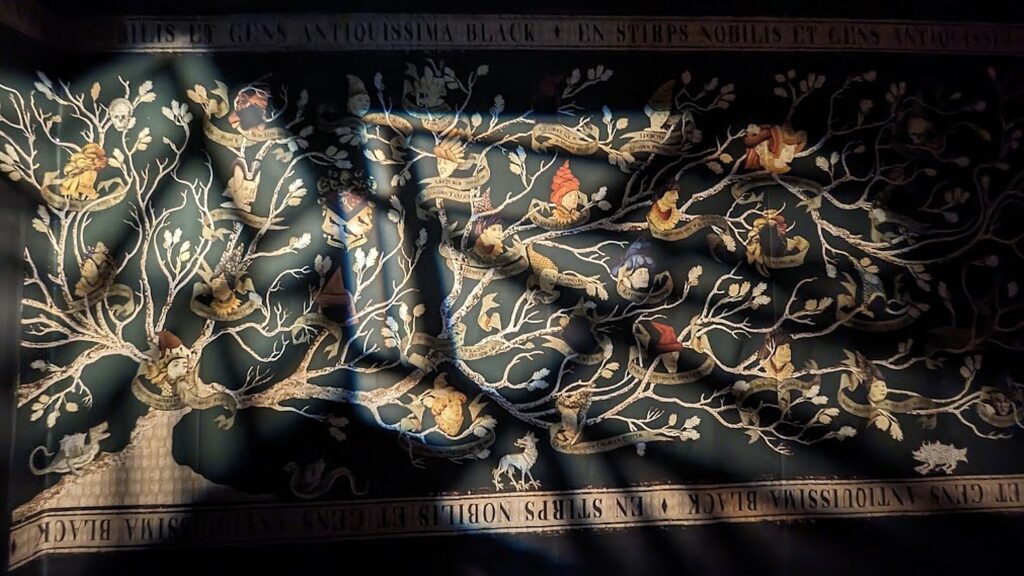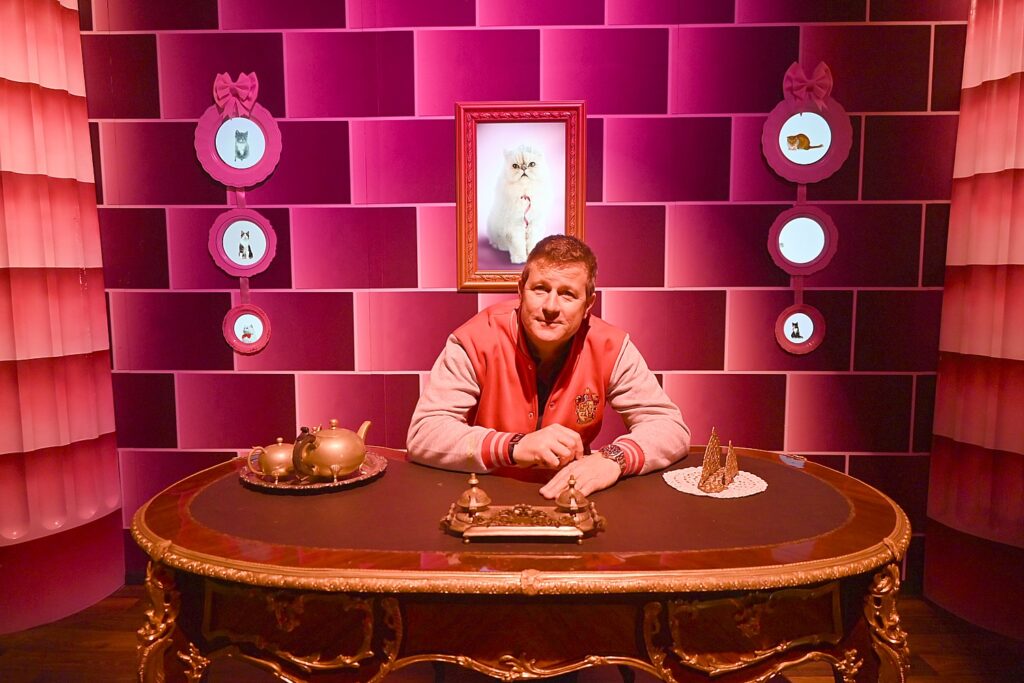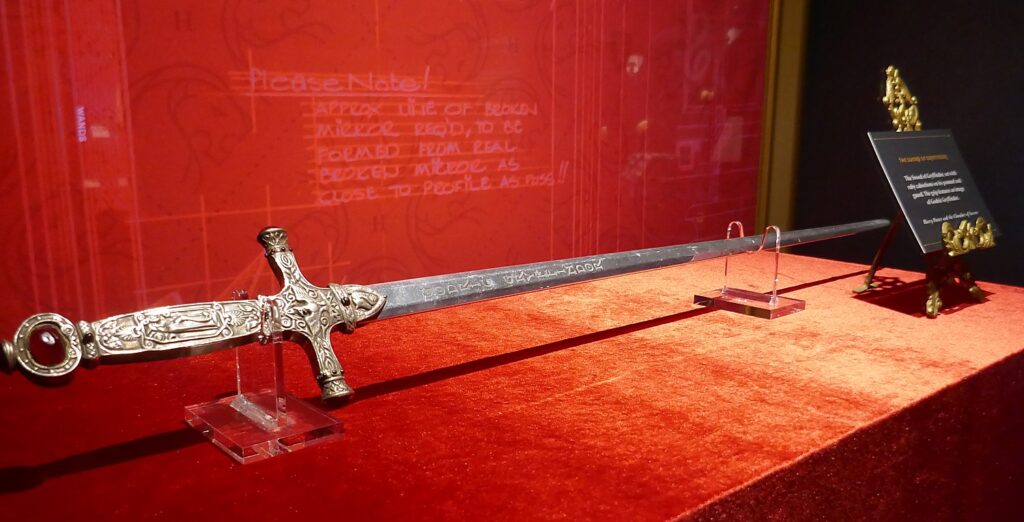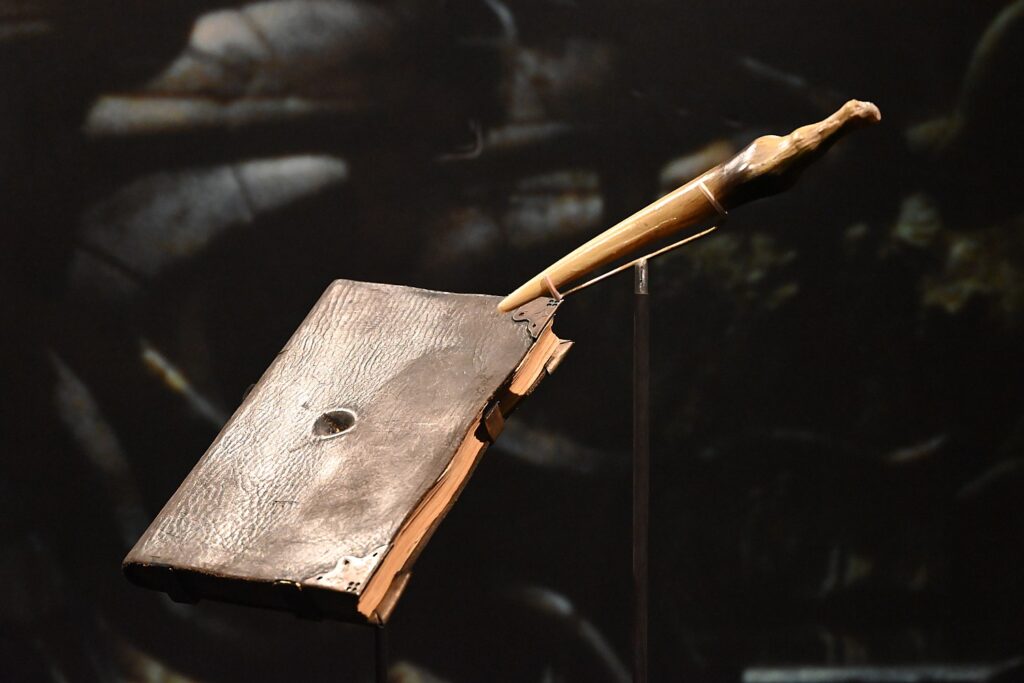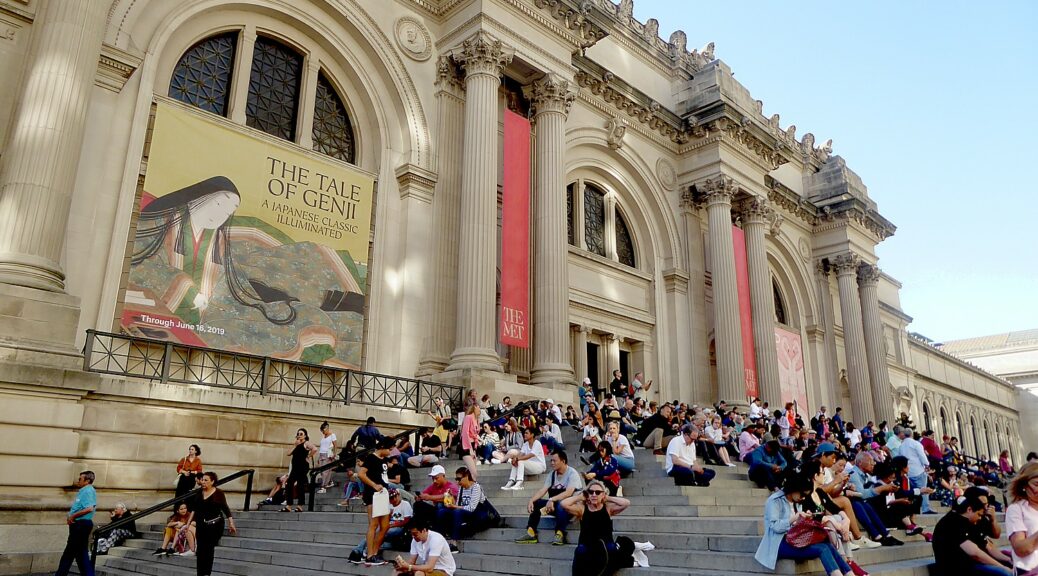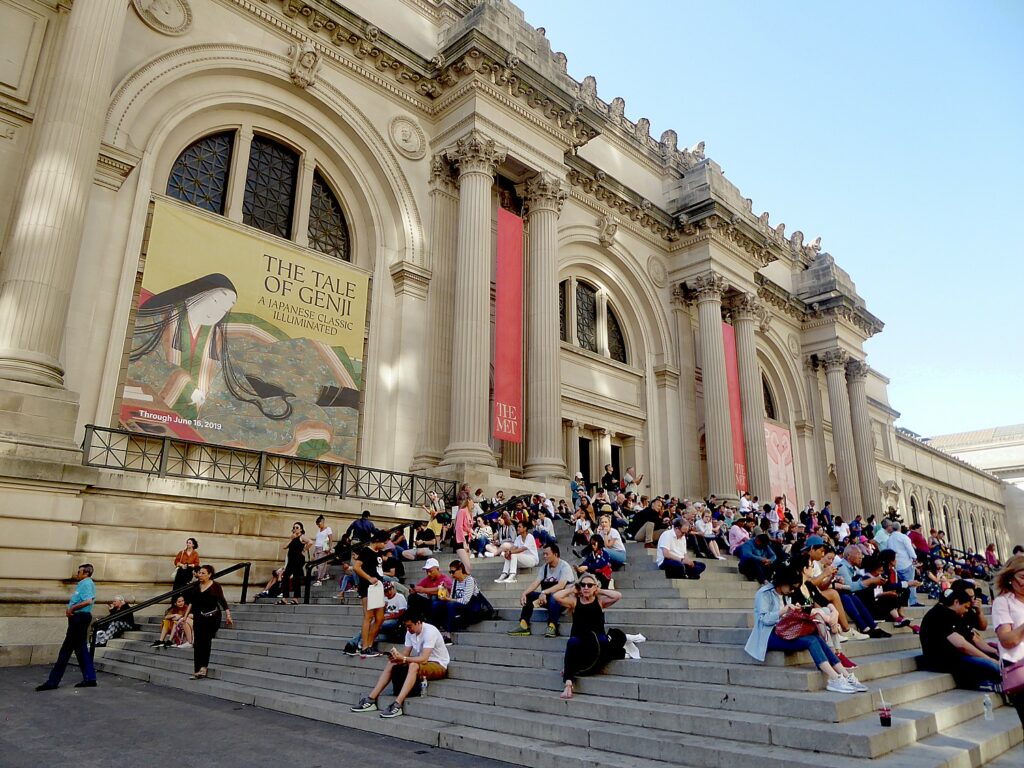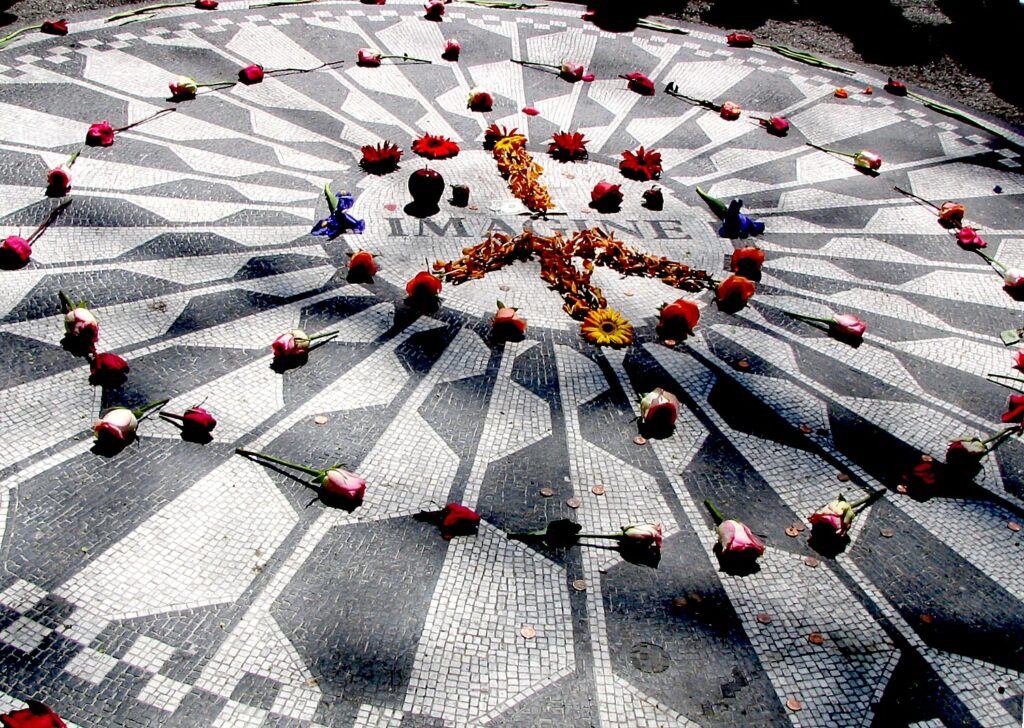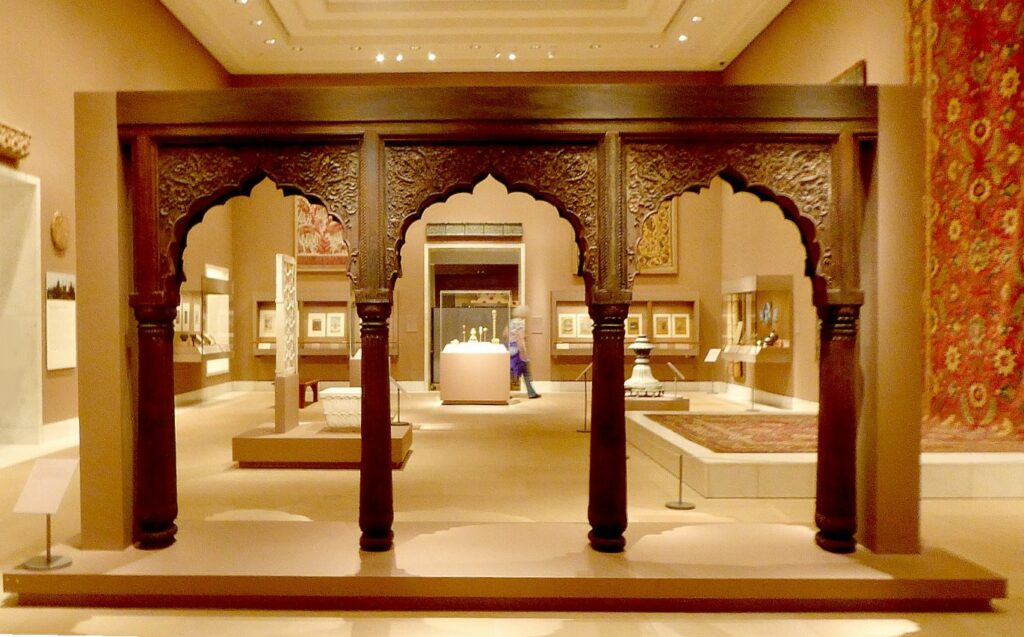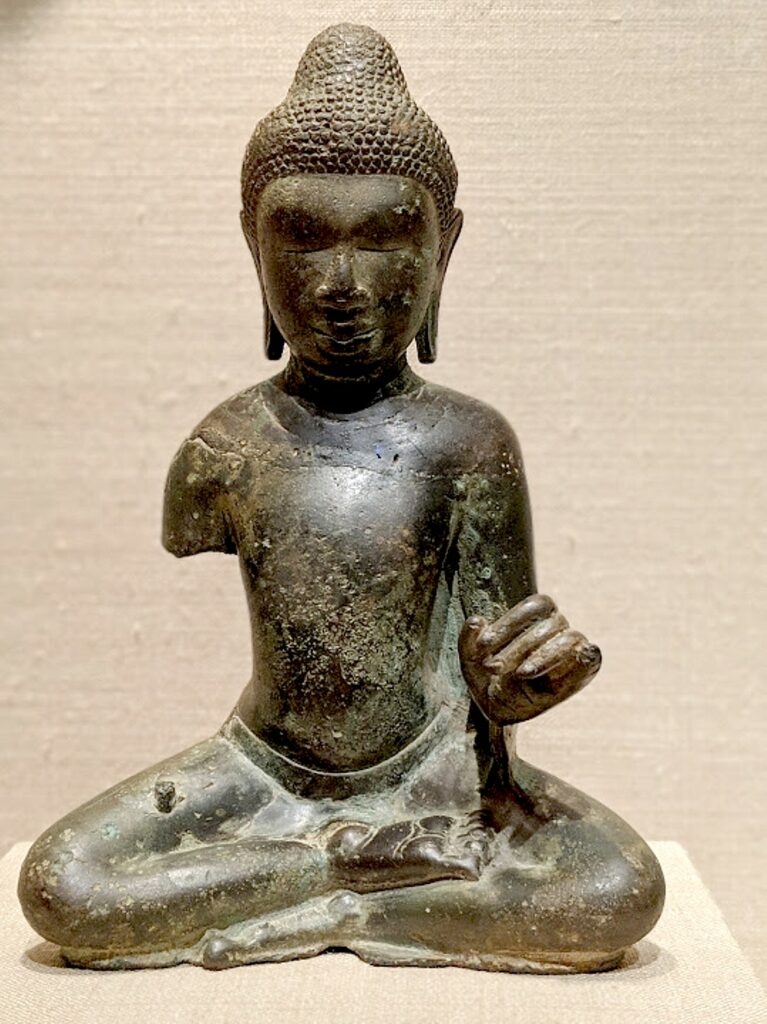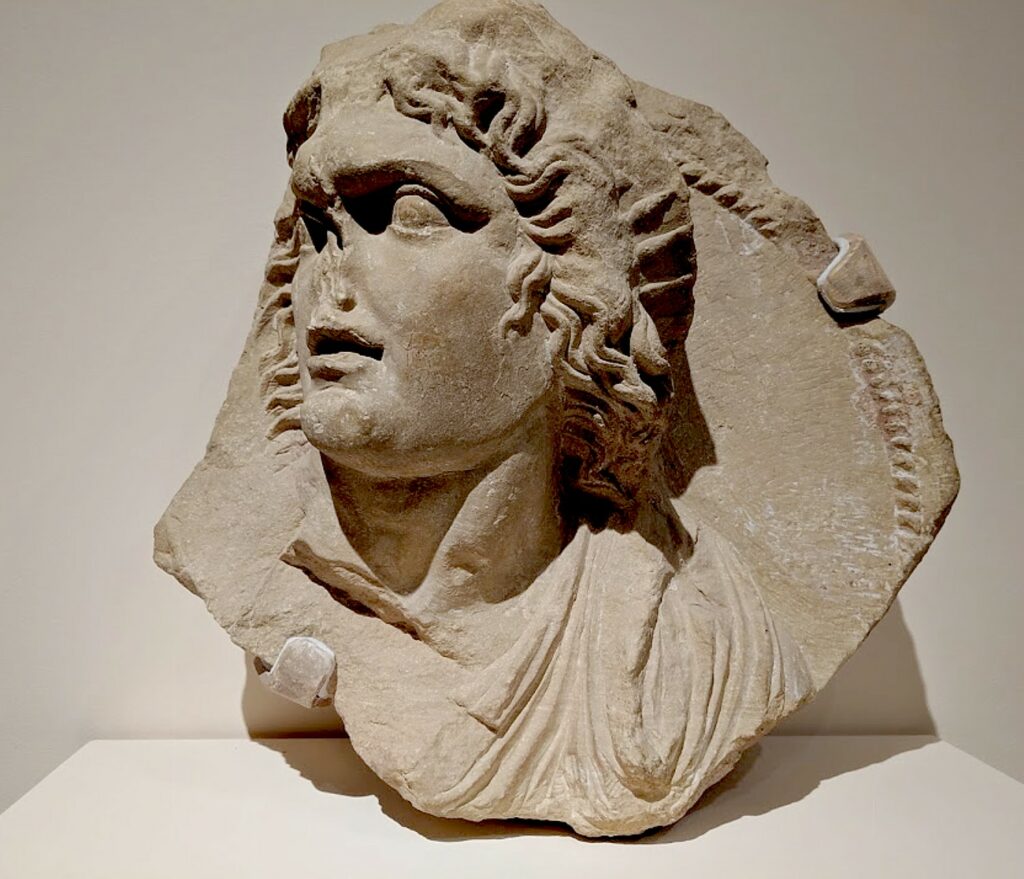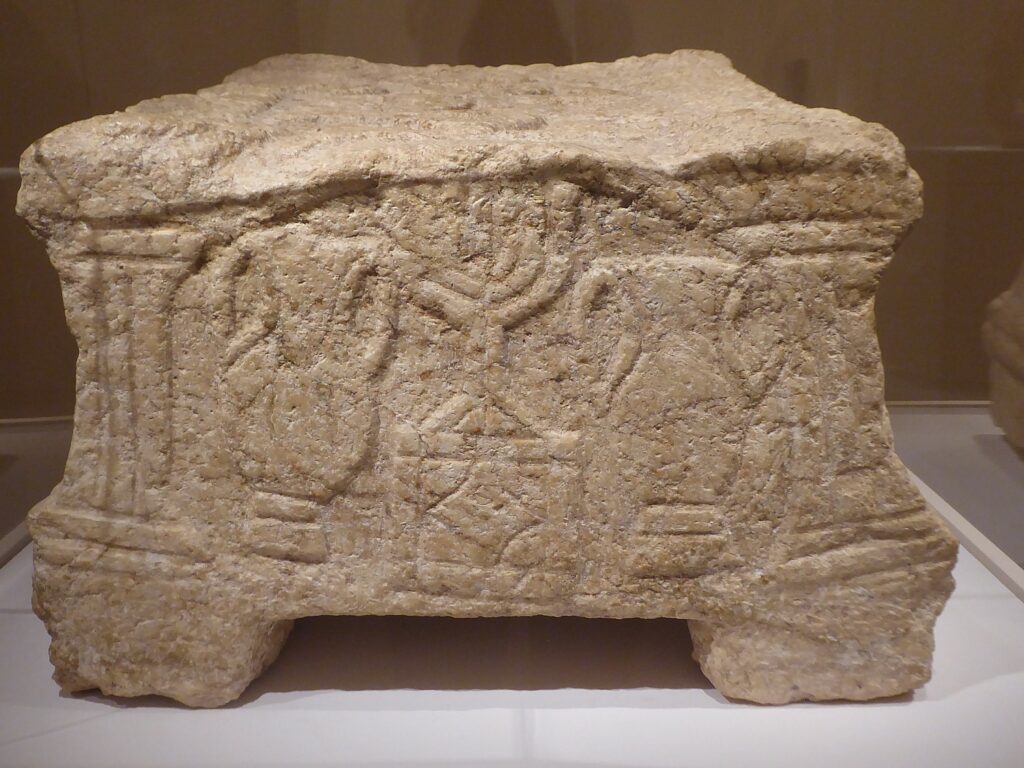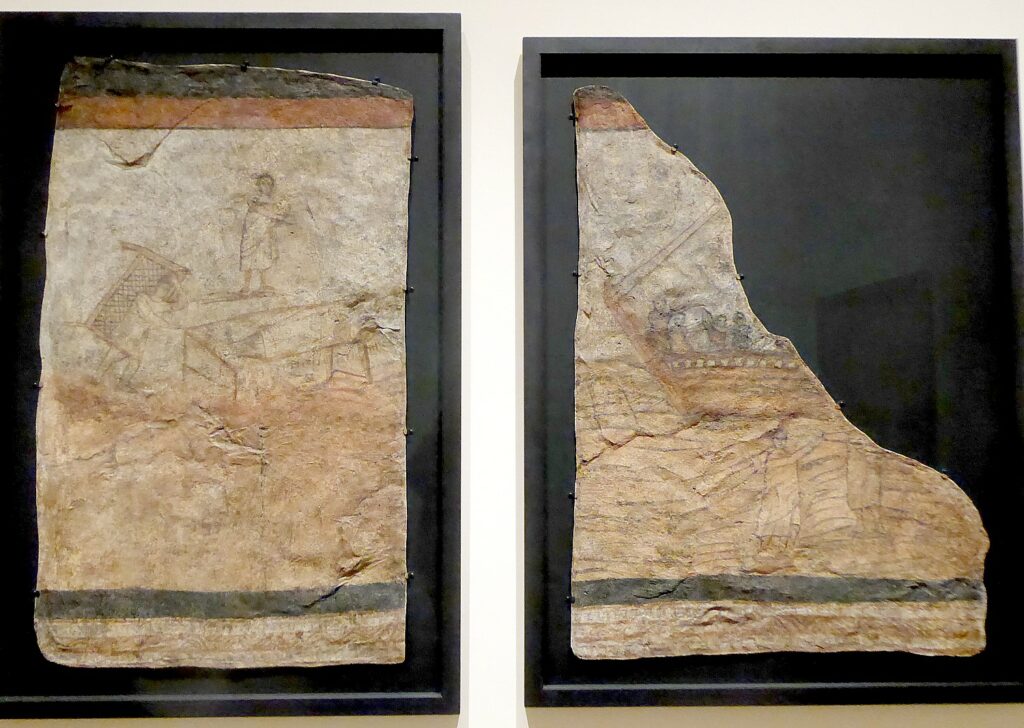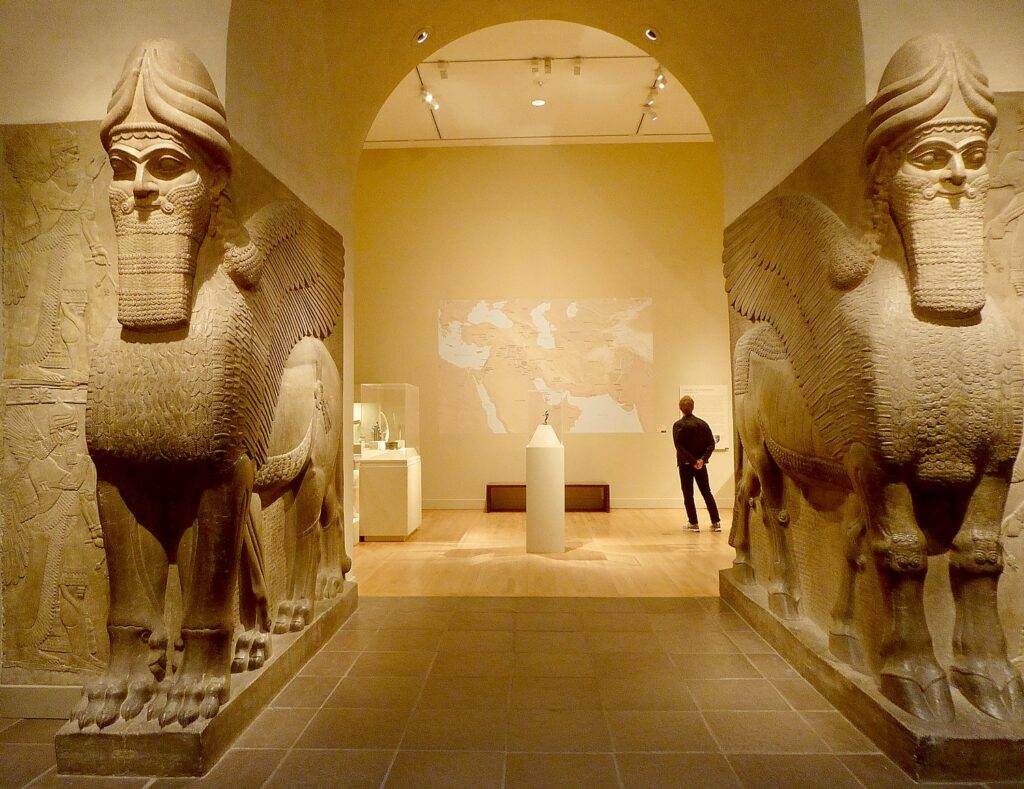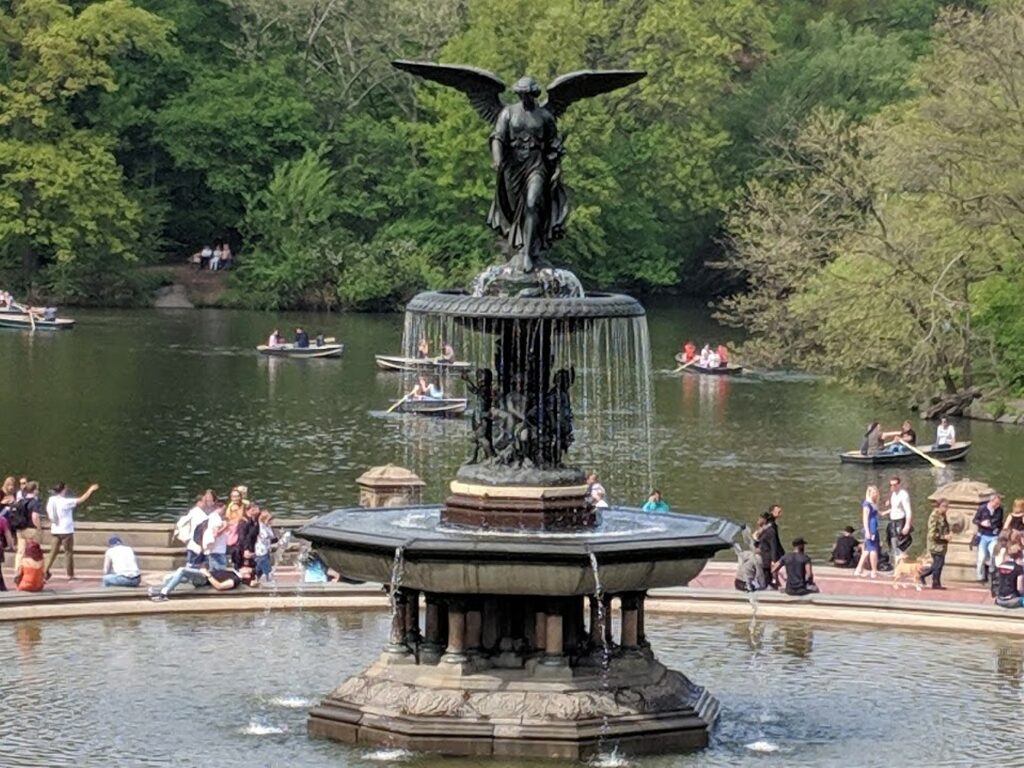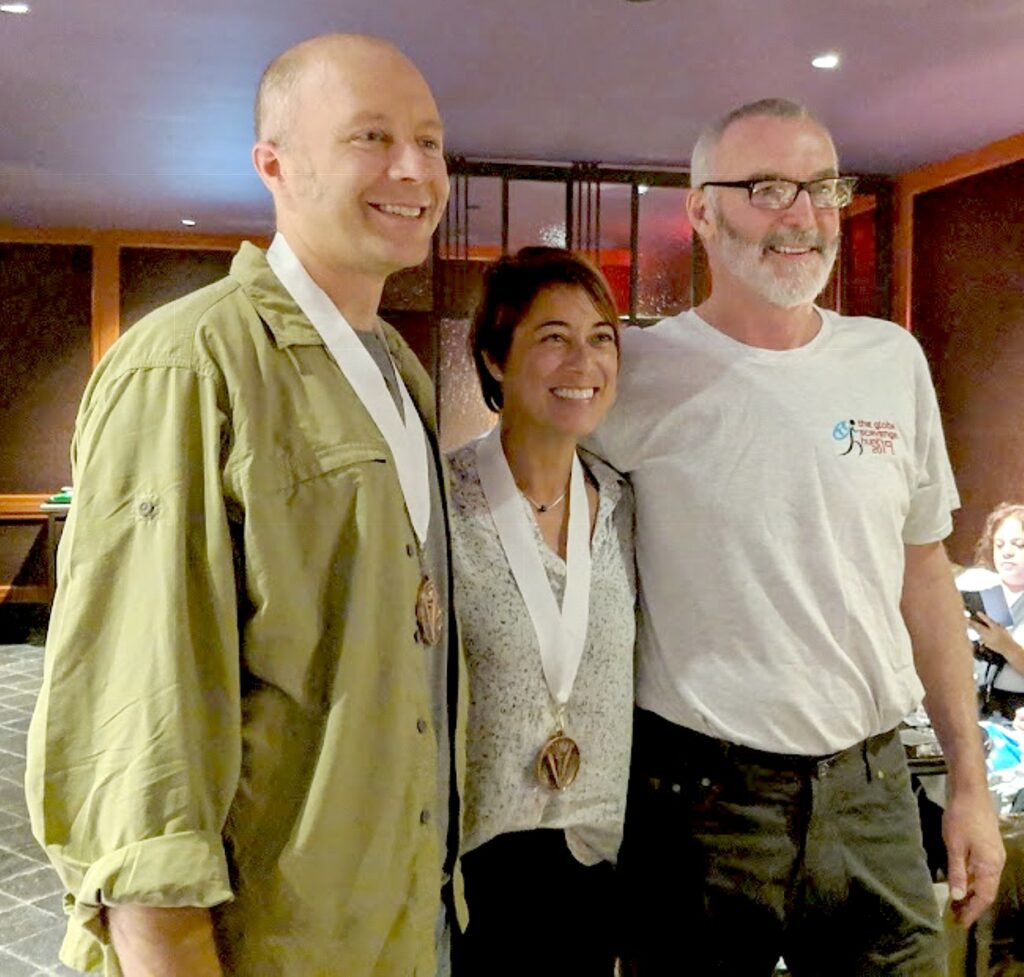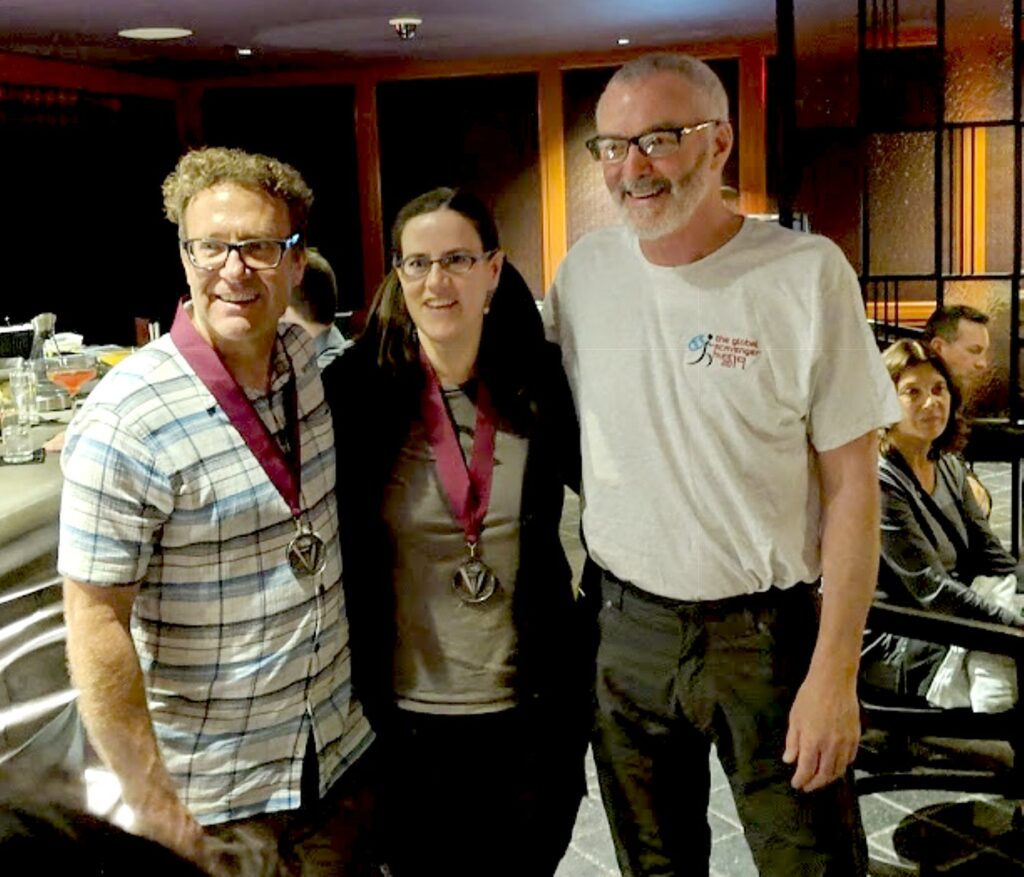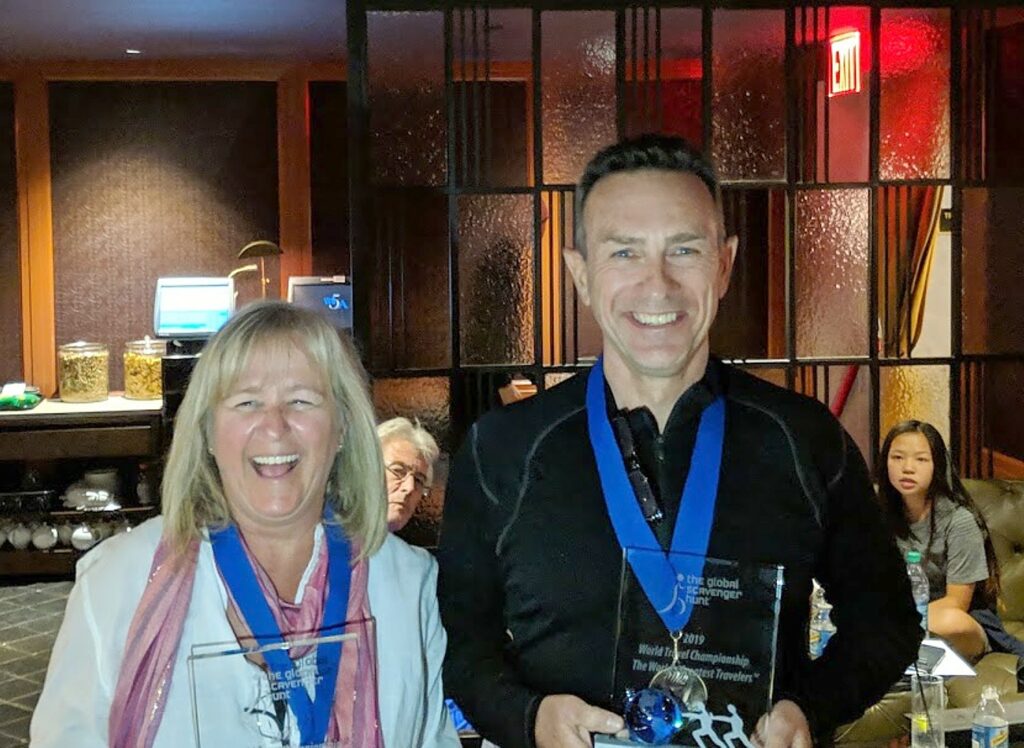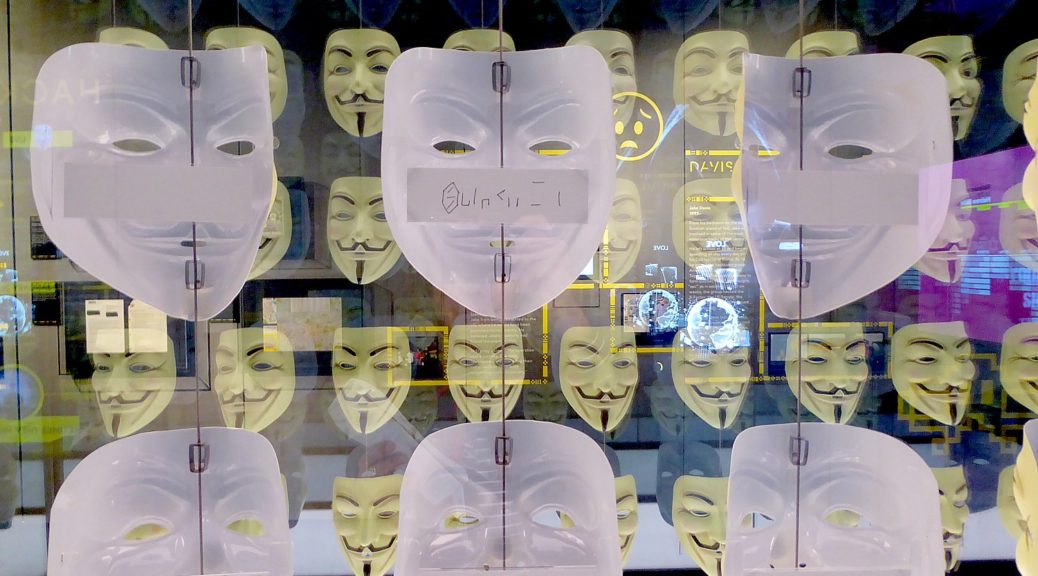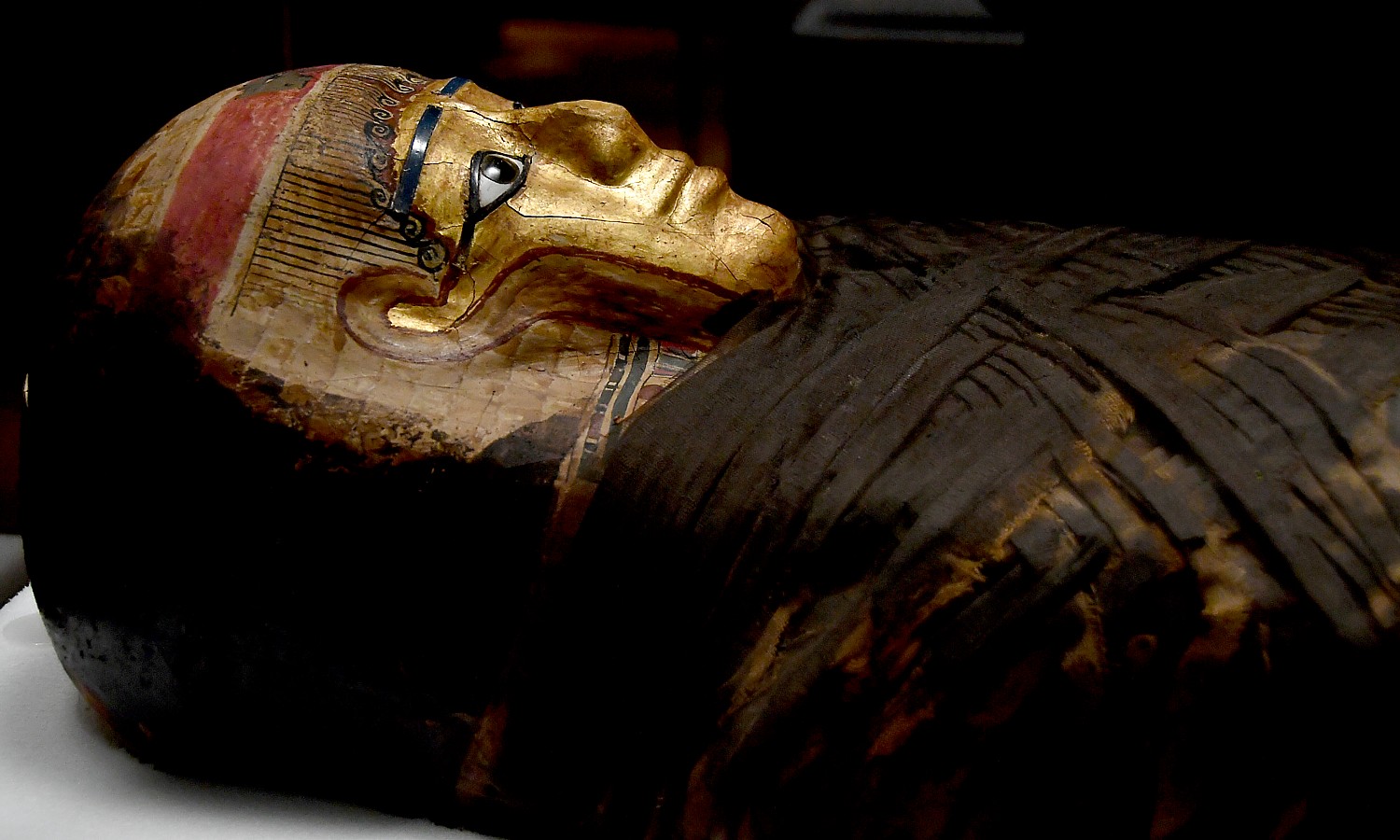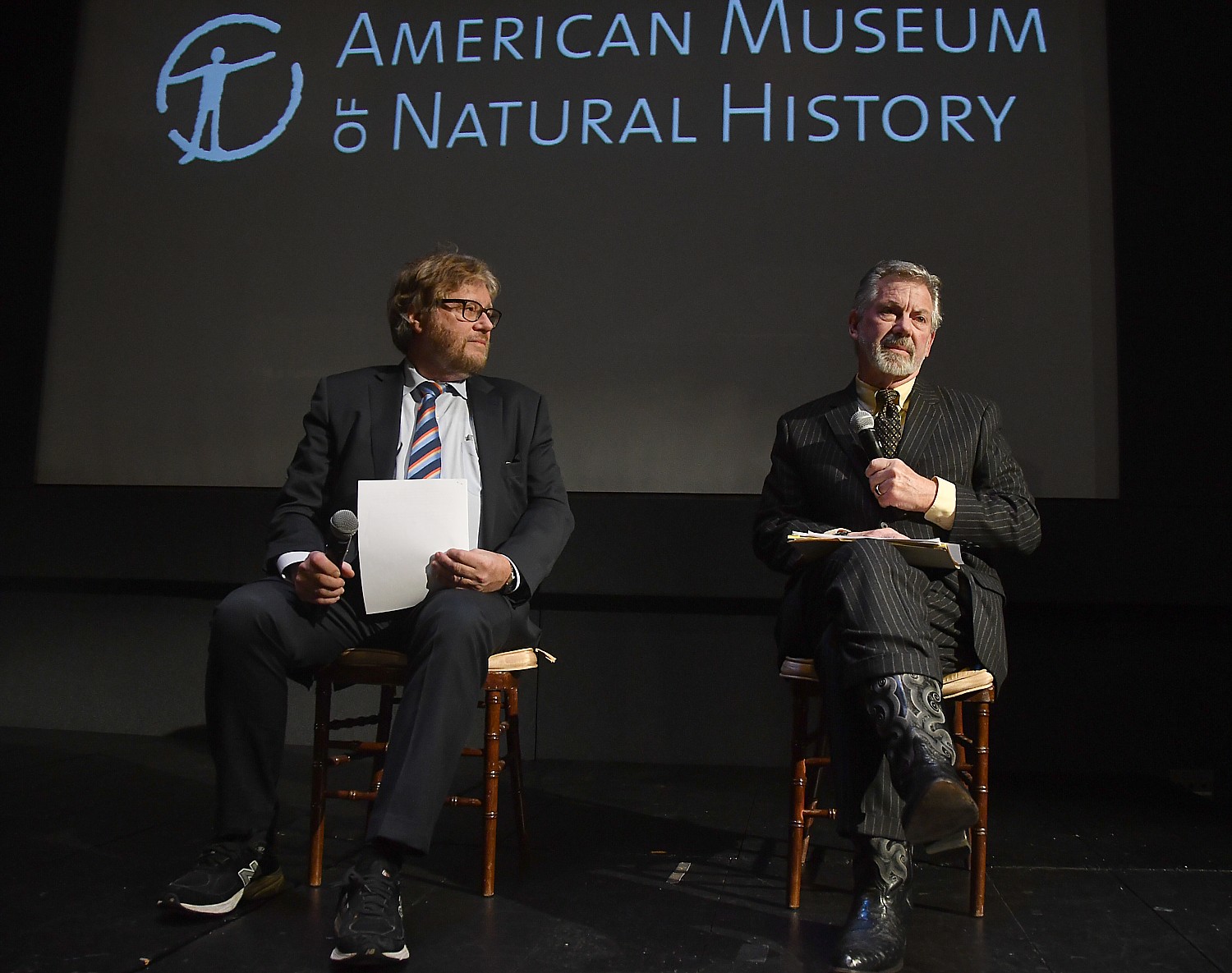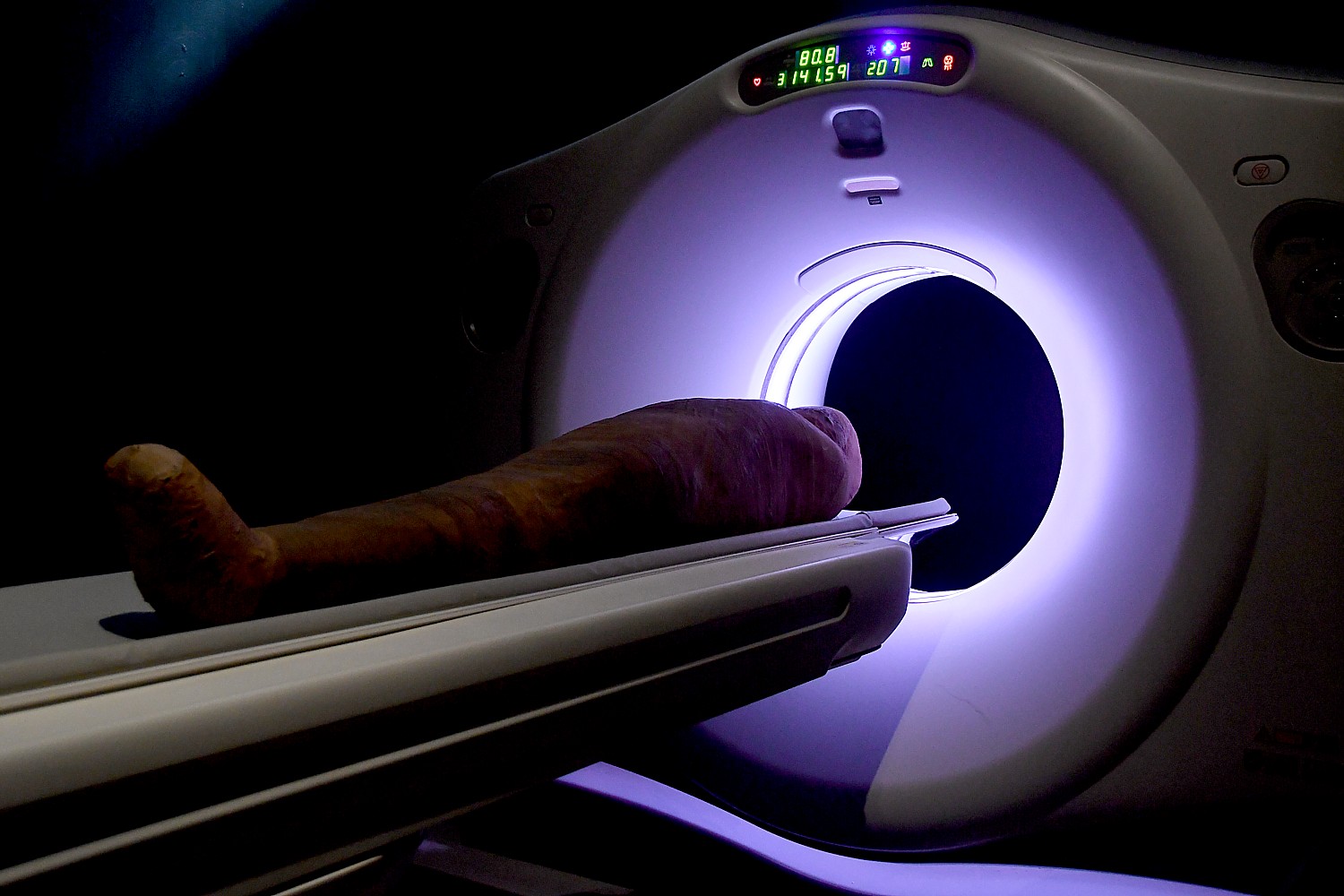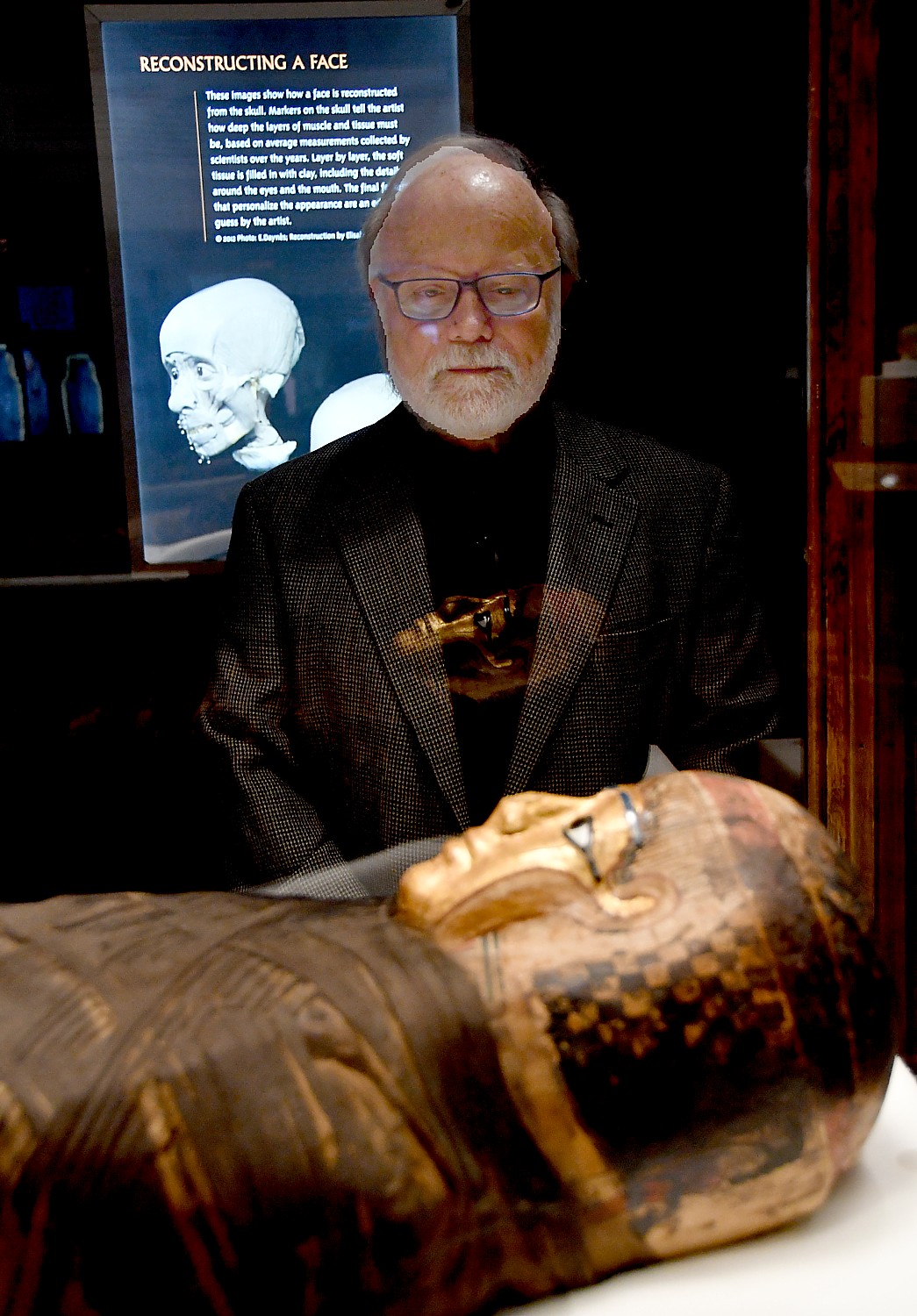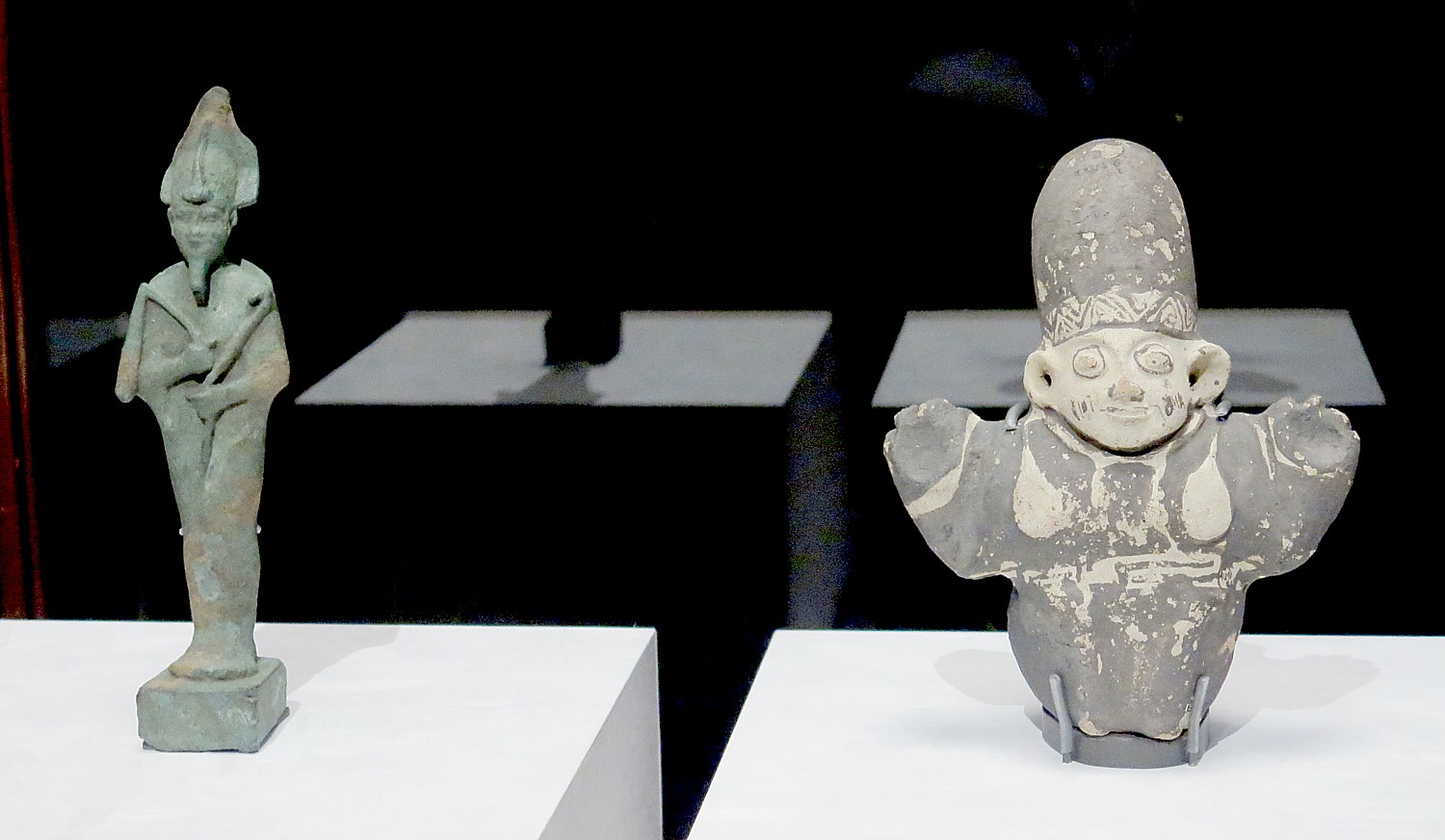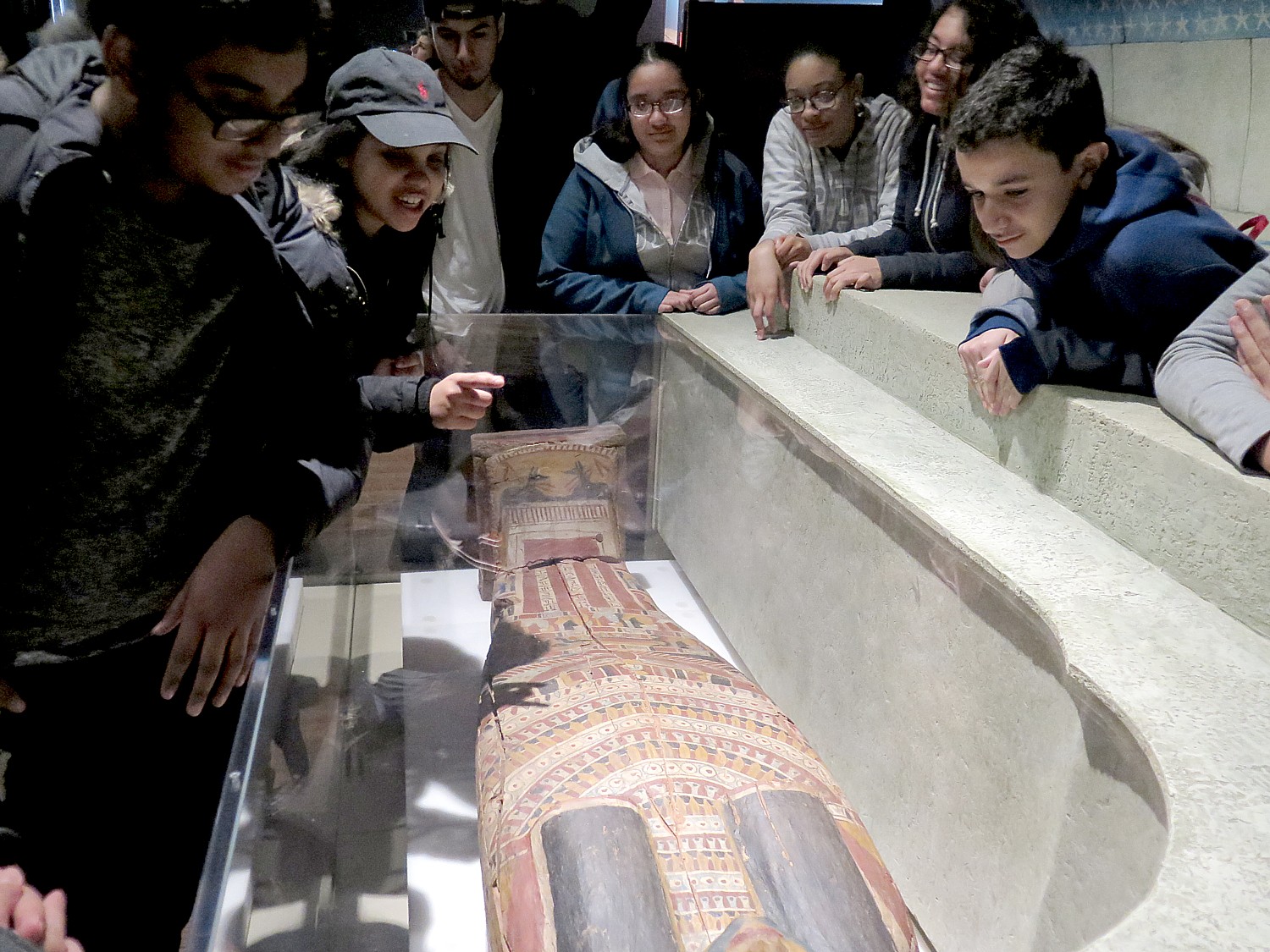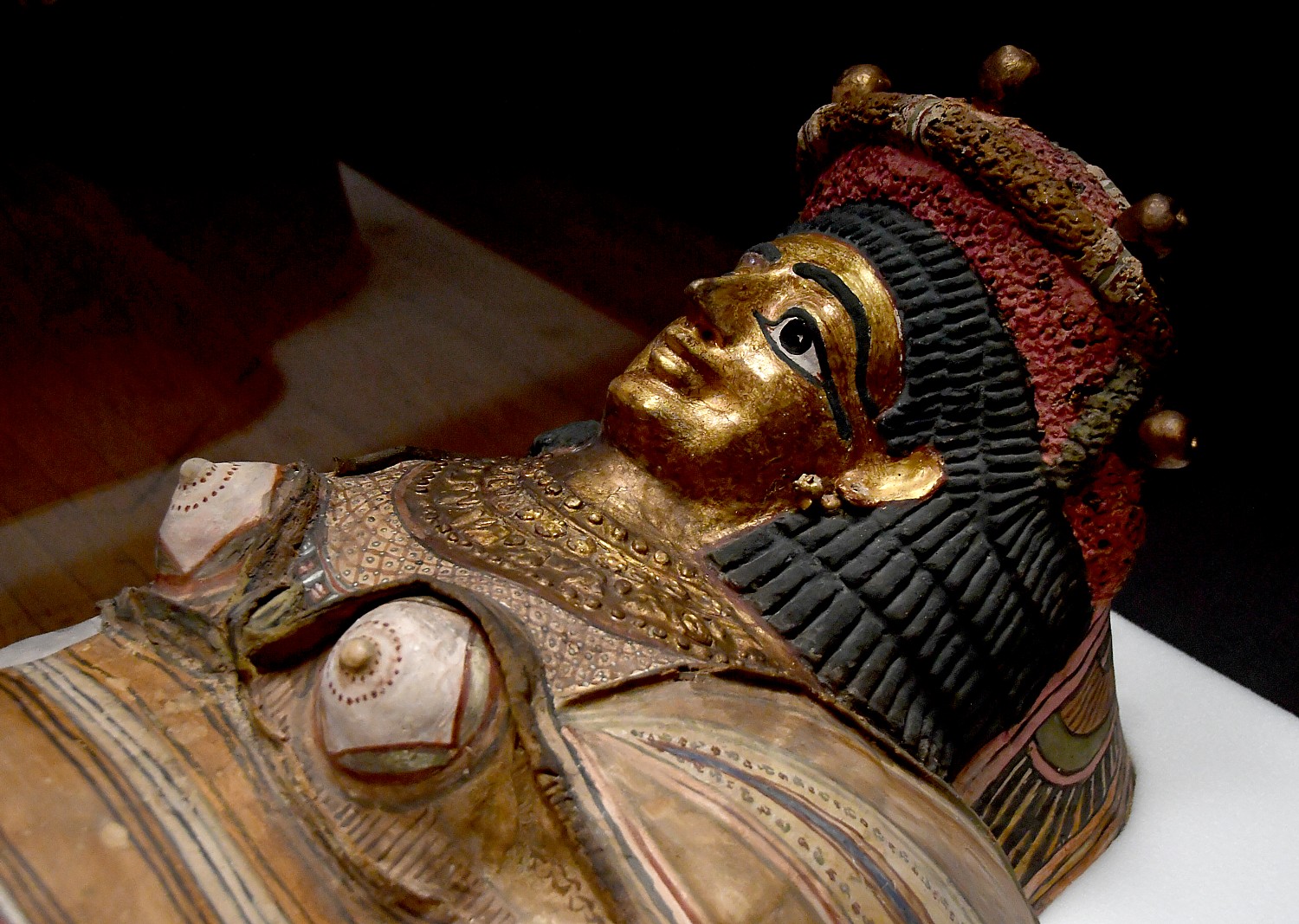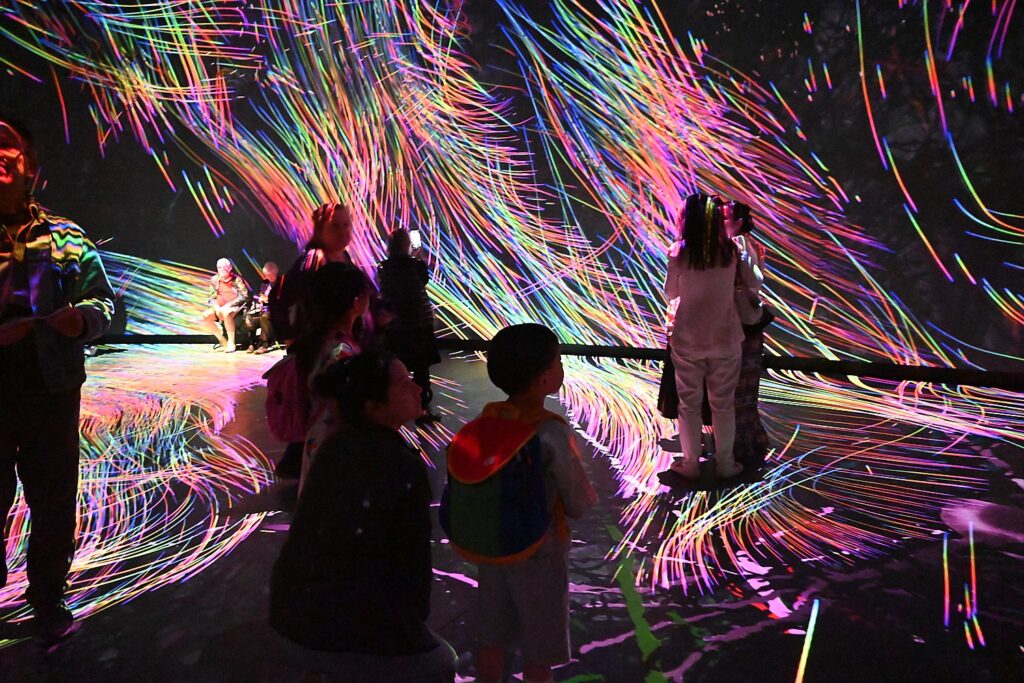
By Karen Rubin, Travel Features Syndicate, goingplacesfarandnear.com
As I walk through a corridor lined with interactive displays on my way into seeing “Invisible Worlds” in the American Museum of Natural History’s new Gilder Center for Science, Education, Innovation, these are the lessons I learn:
All life is related through DNA.
All life is connected with an ecosystem.
All life is connected through food nets – the sun’s energy is in every bite.
Life requires energy.
All of life’s dramas play out in ecosystems as individuals cooperate and compete to survive.
In Nature, nothing exists alone.
And as you go through the iconic American Museum of Natural History, and especially the newly opened Gilder Center, what strikes you is this: the differences among all living creatures are intriguing but the similarities are even more edifying.
The new Gilder Center which opened in May, goes further than anything before in this iconic institution to engage, immerse, create interactions that make the transfer of knowledge, the act of active learning, the probing and understanding of the Secrets of Life absolutely thrilling.
The presentations are genius in the way they appeal to all ages and levels of understanding. From the dramatic architecture and physical space, to the state-of-the-art delivery to maximize immersion and engagement, to how smartly complex ideas are presented in simple terms without pandering, getting down to the essence, then inviting you to go deeper as you choose.
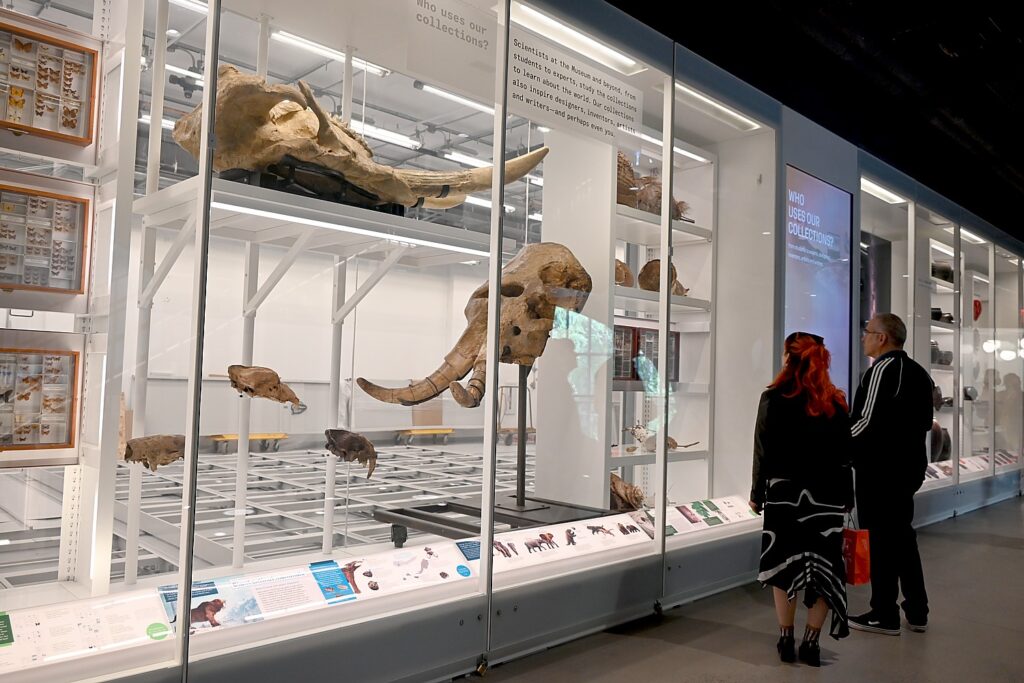
For the first time, we have access to see so much more of the Museum’s collections with the innovative displays of the Louis V. Gerstner, Jr. Collections Core, posing these basic questions:
Why do we study? Why do we collect? What do we learn? Why is it important? What can New York rocks tell us about the history of our continent? What can we learn from a pot? What can a footprint tell us that fossilized dinosaur bones cannot?
I watch as people are transfixed gazing into the spectacular displays, featuring more than 3,000 objects on three levels, representing every area of the Museum’s collections: vertebrate and invertebrate zoology, paleontology, geology, anthropology, and archaeology, with materials ranging from dinosaur tracks to astronomical instruments, and from antlers to pottery.
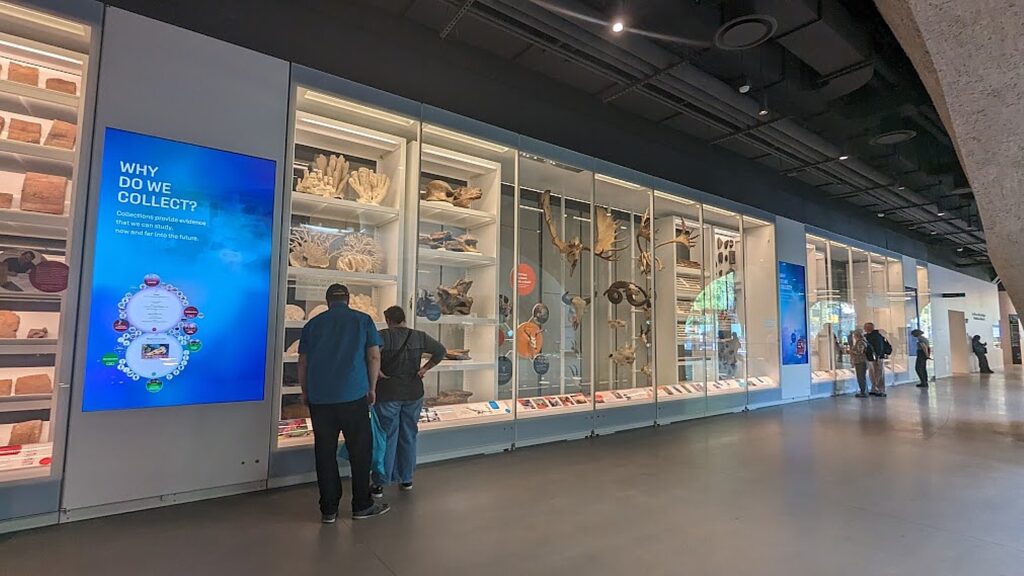
A series of digital exhibits feature stories about how scientists analyze various types of collections and introduce Museum researchers, while the glass-paneled exhibits, including those in the Macaulay Family Foundation Collection Galleries on the first and second floors, let us glimpse into working collections areas situated behind the displays. Together with the collections stored in the new Lepidoptera facility, which is also visible to visitors (located next to the Collections Core on the second floor), the Gilder Center houses more than 4 million scientific specimens
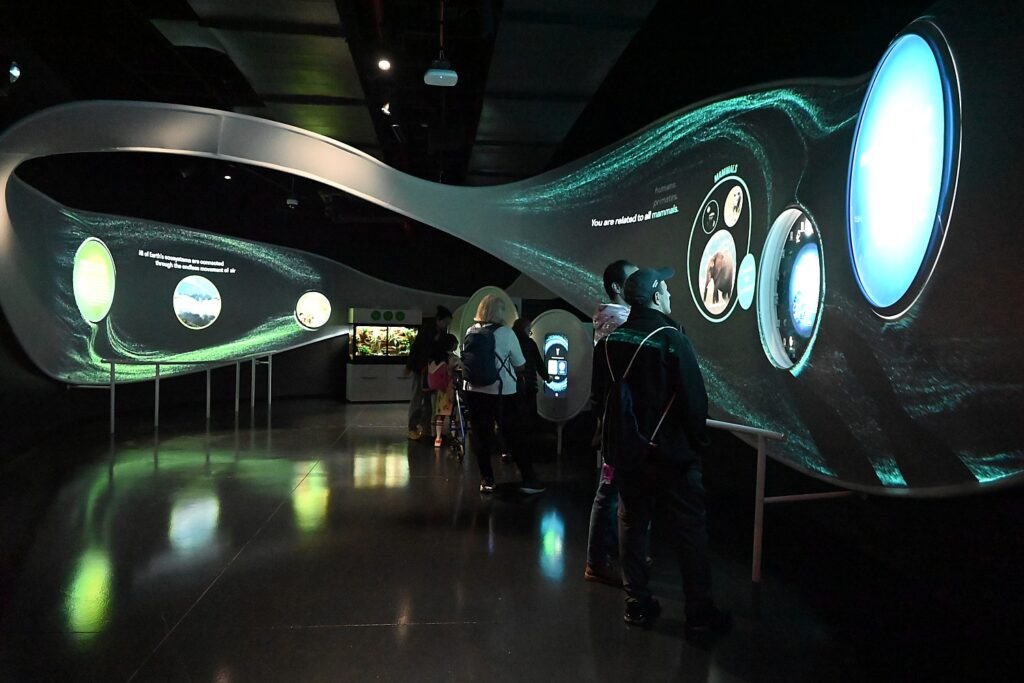
The Gilder Center is where you can see the astounding “Invisible Worlds,” an extraordinary 360-degree immersive science-and-art experience that represents the next generation in scientific visualization with interactive, immersive elements, stunning photography, graphics, sound and narration. It is visually exciting (you are flushed with the lights, the floor reacts to your movements) – highly instagrammable as you are bathed in color and pattern.
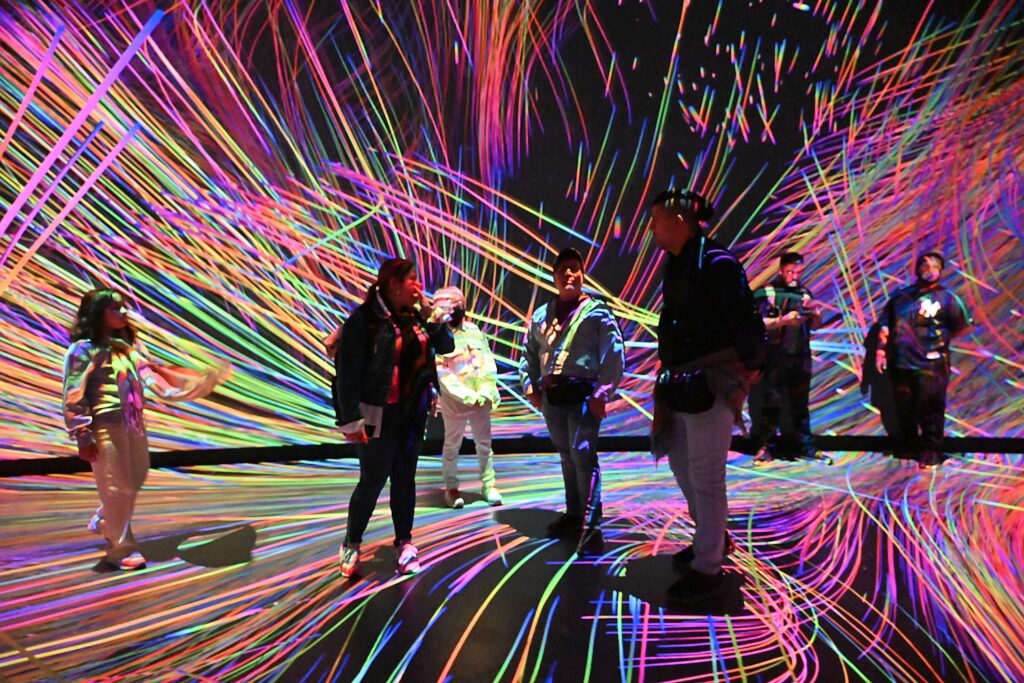
As you walk into “Invisible Worlds” (clever in that it is on a repeating 12-minute loop so you flow in and out on your own time, and don’t have to wait for start times and audiences to empty and fill an auditorium – I watched it twice), you first go through the Susan S. and Kenneth L. Wallach Gallery, where you engage at stations that pose questions you get to choose an answer and learn from the correct answer. (This requires a separate admission ticket.) They make learning so incredibly exciting – I am even fascinated to review the list of acknowledgements of the scientists and institutions that contributed to creating “Invisible Worlds” posted as you exit. The experience was designed by the Berlin-based Tamschick Media+Space with the Seville-based Boris Micka Associates, who worked closely with data visualization specialists and scientists from the Museum and researchers from around the world.
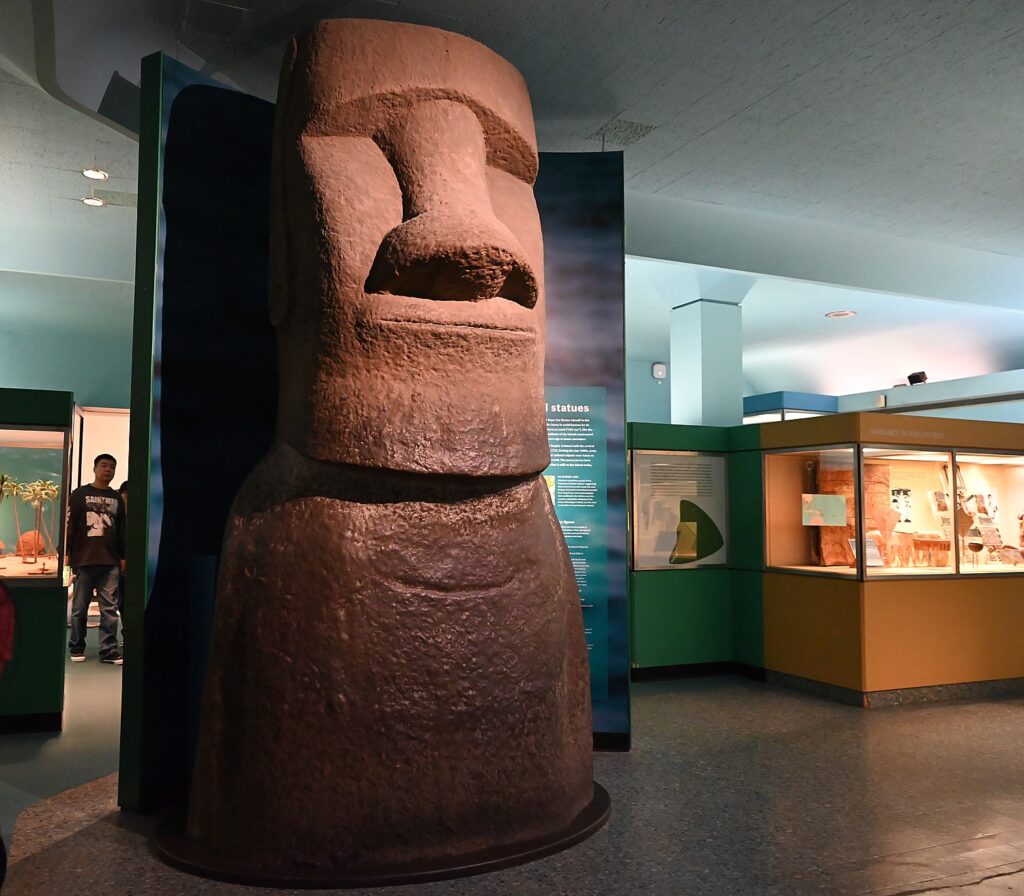
The 230,000-square-foot $465 million, seven-story Gilder Center is brilliantly situated to create 33 connections among 10 Museum buildings, linking the entire campus. I go through one hall and find myself among Pacific Peoples (the Moai ancestor statue from Rapa Nui, better known as Easter Island, is a BIG hit). Through another doorway and into the Hall of Vertebrate Origins (how fossils explain evolution and show a family tree of life of who we are related to full of surprises).
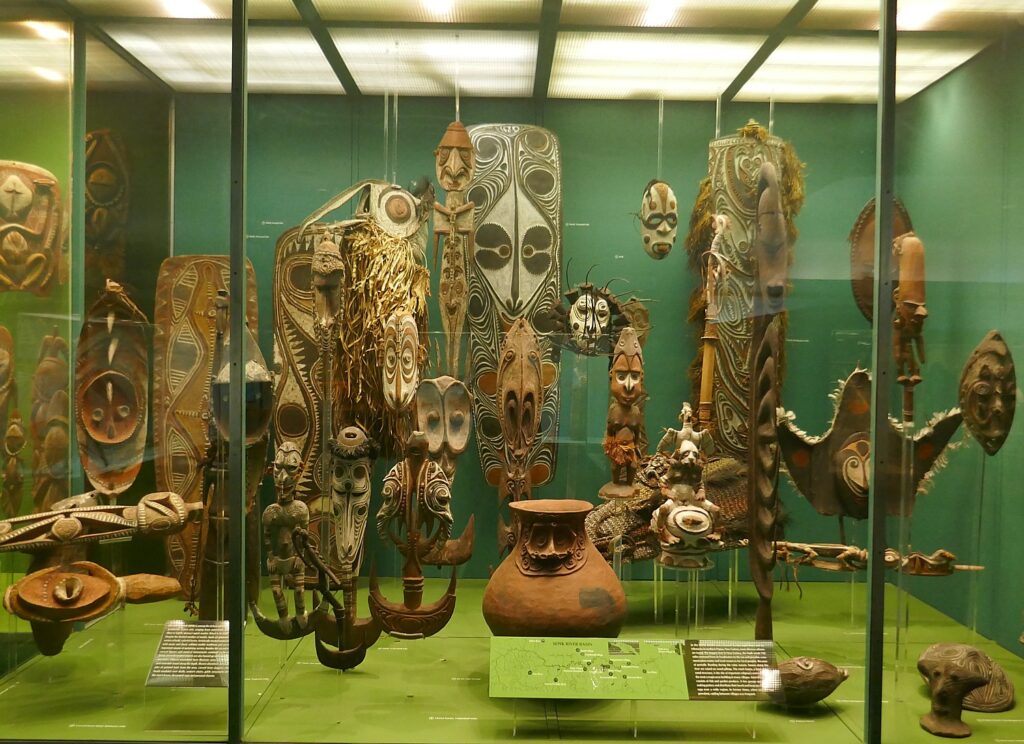
On the main floor, I find myself walking through an incomparable photo exhibit of mural-sized insects that are endangered or near instinct (photographer Levon Biss, took 1000 images of insects from AMNH’s collection under a microscope to achieve such extraordinary detail) with fascinating descriptions about the animals, then, go down a ramp into the Big Bang (I still can’t wrap my head around the concept that from the size of an atom, the universe burst out within seconds). From here, I walk along the ramp, where every step is 450 million years, through 13 billion years of the formation of the universe, expanding, expanding, expanding; then find myself in the Hall of Earth (still can’t fathom how the moon was formed in just 24 hours), then back in the Gilder Center in the new Insectarium, where you can conduct an insect orchestra, go inside a bee hive, and, as I find myself doing, watch two gigantic grasshoppers mating (fascinating).
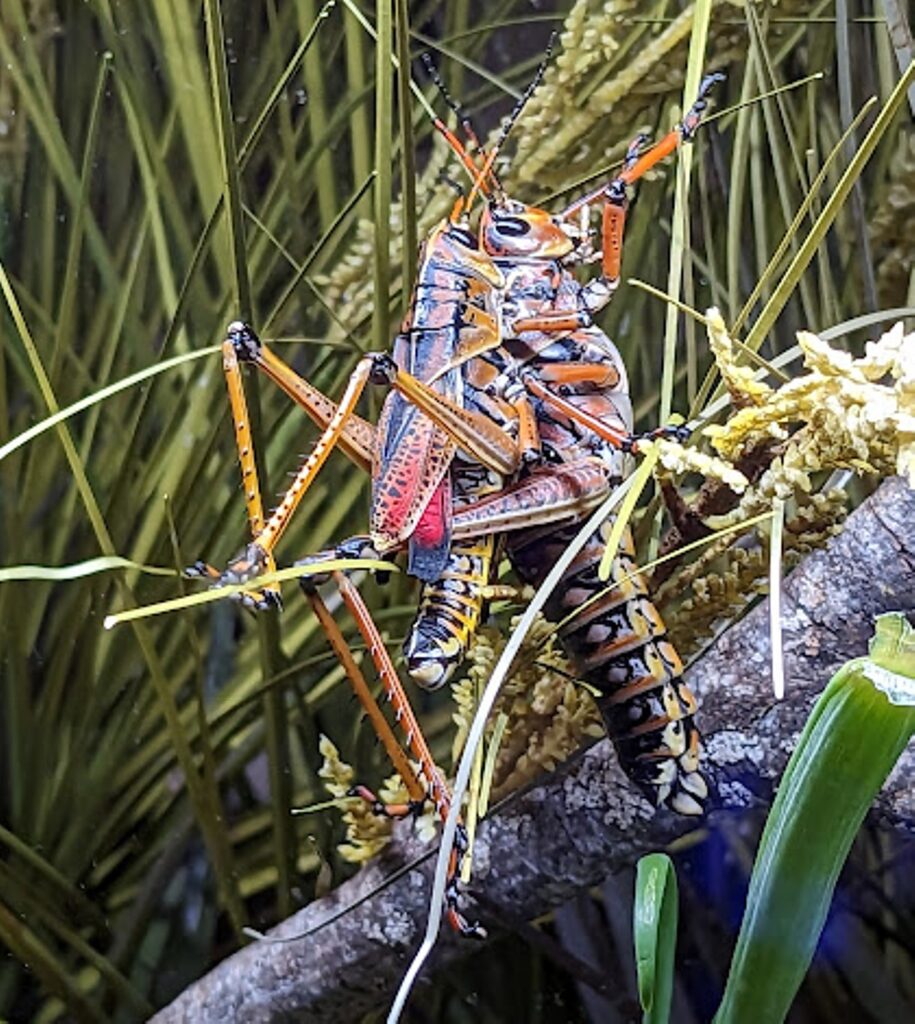
“Pay attention to insects. Many pollinate plants. Some recycle plants and animal matter into the soil. They are food for countless other things – and even on another, often keeping pest populations in check. Whether beetles, bees or butterflies, insects help natural ecosystems stay healthy.”
For someone who doesn’t (didn’t) particularly care for insects, I have never been so delighted and fascinated to be amid them. The displays are INCREDIBLE.
The display of ants, coming from their nests, each hauling their leaf, traveling, down, up, across metal tubes above the walkway, then down and through a huge enclosure, then up, down, up, down a series of tubes – they work hard!
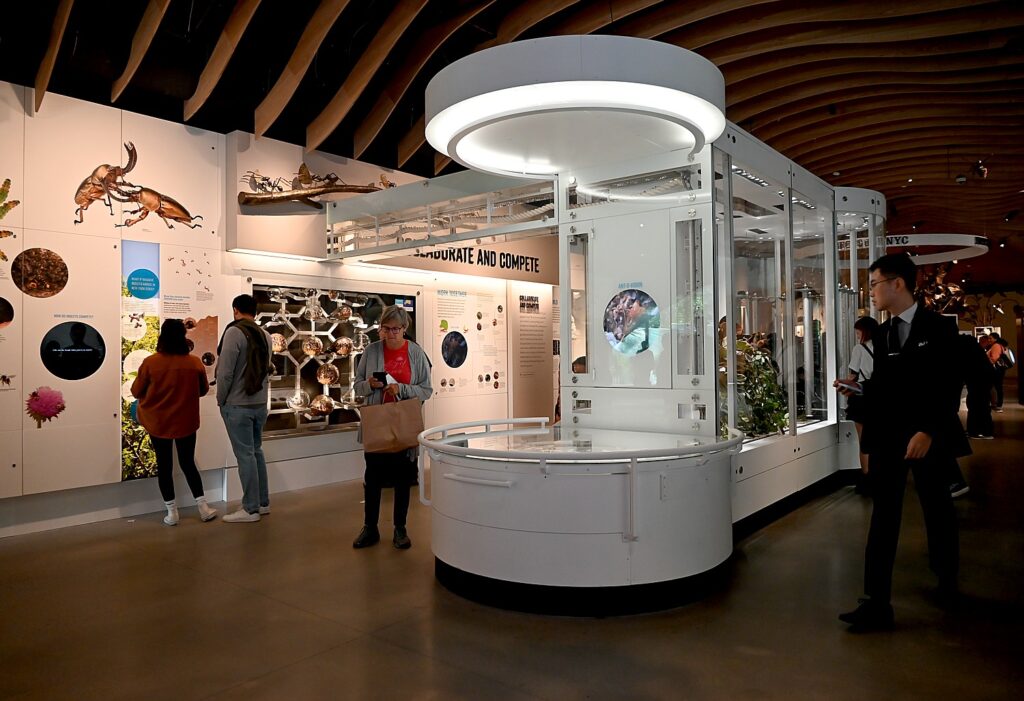
The key message: insects are not “pests” but vital as the basis of the ecosystem that sustains all life.
Altogether, the exhibits show these critical themes: all life is connected. All life is related. There are very real threats to survival, to extinction and when you go through the Dinosaur exhibits, you appreciate just how real that is. The notion of extinction also becomes very real when you go through another favorite section, the Hall of Human Evolution (check out how many hominid species have already gone extinct before we homo sapiens came to be dominant).

I love the reaction of the children, from the youngest toddlers, to the various experiences. And couples on a date (this is very date-worthy place).
The Gilder Center also houses a now-permanent Butterfly Vivarium (separate ticket required). The year-round, 2,500-square-foot Davis Family Butterfly Vivarium is where you can mingle with up to 1,000 free-flying butterflies (as many as 80 species) in various micro-environments along a meandering route. The Vivarium let’s you closely observe one of nature’s vital environmental barometers as well as a view into the pupae incubator, where you can learn about the butterfly life cycle and observe chrysalises (perhaps even see a butterfly emerge!). Staff also helps you view butterflies through a digital microscope.
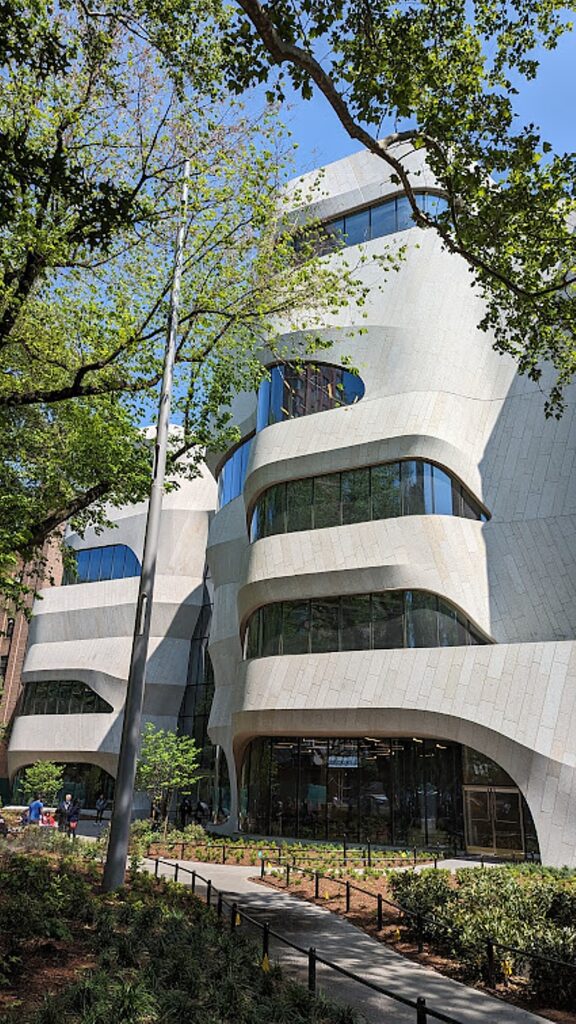
The 230,000-square-foot $465 million, seven-story Gilder Center creates 33 connections among 10 Museum buildings to link the entire campus, with a new entrance on the Museum’s west side, at Columbus Avenue and 79th Street from the Theodore Roosevelt Park.
The Gilder Center’s undulating façade, with its inviting expanses of bird-safe fritted glass, is clad in Milford pink granite, the same stone used on the Central Park West entrance. The diagonal pattern of the stone panels evokes both the phenomenon of geological layering and the design of the richly textured, coursing surface of the masonry on the Museum’s 77th Street side.
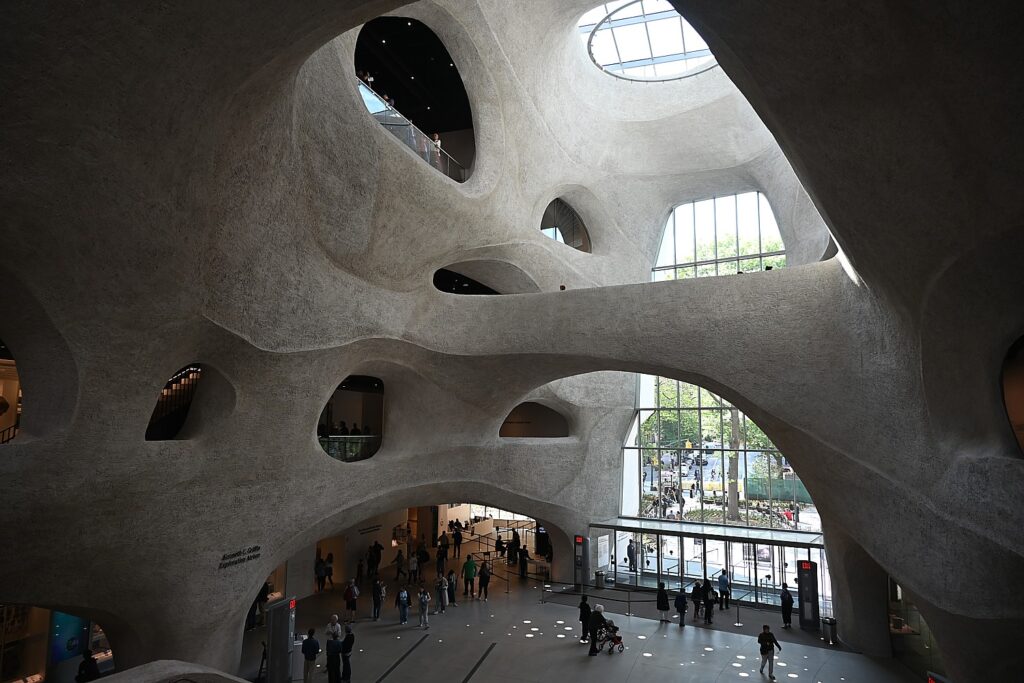
The Gilder Center architecture – it was designed by Studio Gang, the international architecture and urban design practice led by Jeanne Gang – evokes the habitats of its subjects. Is this what an ant’s habitat would be like? Or where our cave dwelling ancestors would live? The shapes, patterns are so exciting, it invites instagrammable photos and selfies, as we saw. And so do the exhibits, especially Invisible Worlds, where the lights, lines, shapes wash over you and the entire room, getting everyone snapping and clicking.
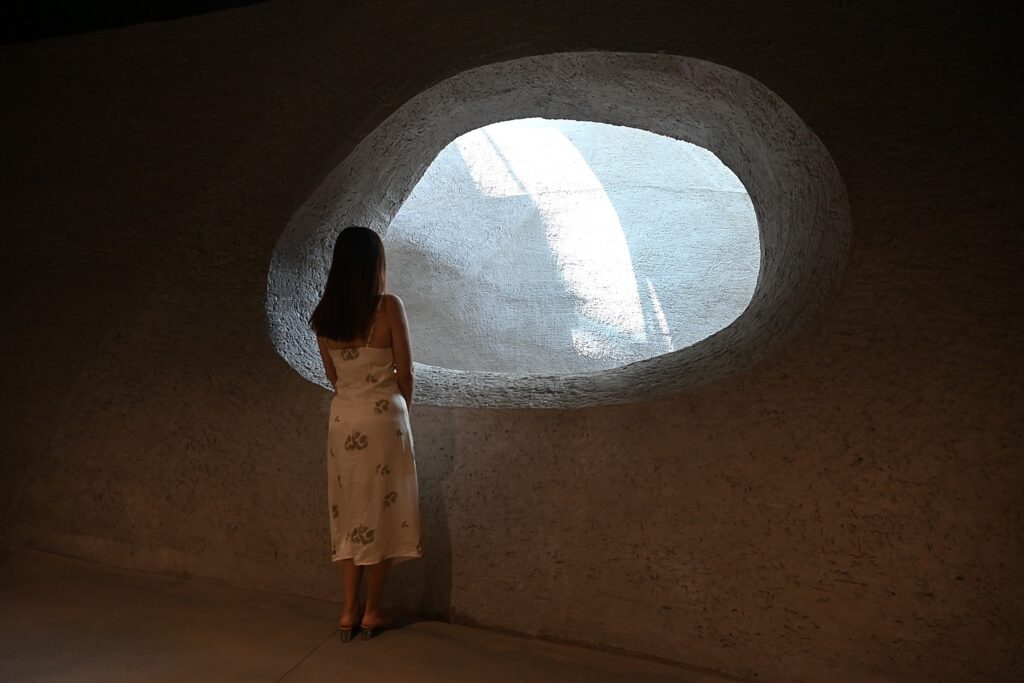
Upon entering the Gilder Center, you find yourself in the five-story Kenneth C. Griffin Exploration Atrium, a grand space illuminated with natural light admitted through large-scale skylights. The building’s design is informed by the ways in which wind and water carve out landscapes that are exciting to explore, as well as the forms that hot water etches in blocks of ice.
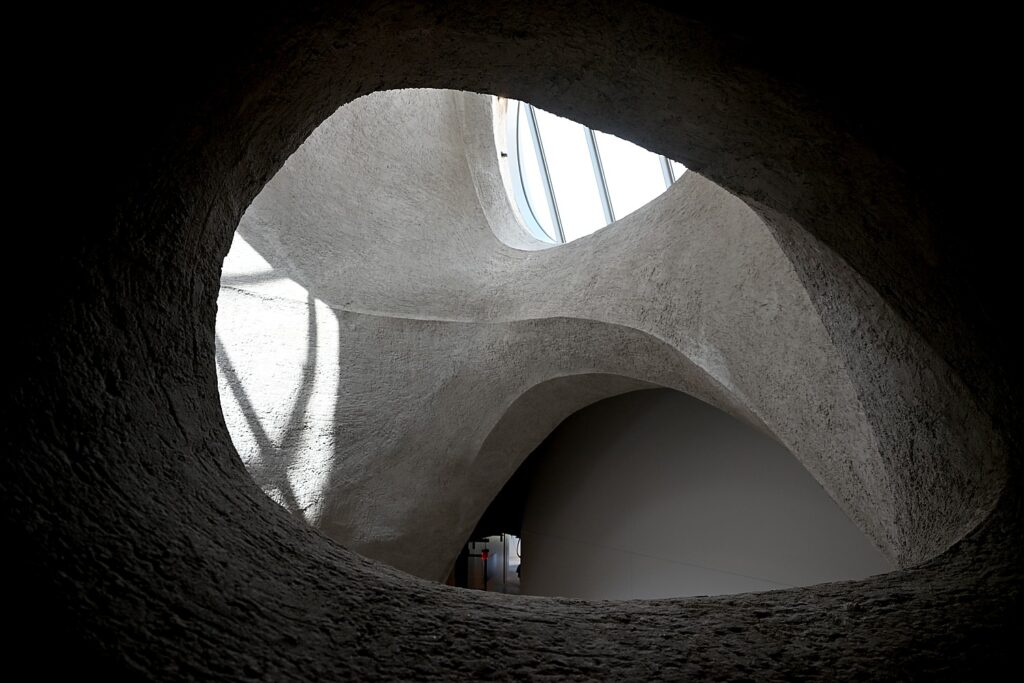
The texture, color, and flowing forms of the Griffin Atrium were inspired by canyons in the southwestern U.S. and animate the Gilder Center’s grand entrance, evoking awe, excitement, and discovery. Its striking structure was created by spraying concrete directly onto rebar without traditional formwork in a technique known as “shotcrete,” invented in the early 1900s by Museum naturalist and taxidermy artist Carl Akeley. The bridges and openings in the hand-finished shotcrete connect visitors physically and visually to multiple levels housing new exhibition galleries, designed by Ralph Appelbaum Associates with the Museum’s Exhibition Department, education spaces, and collections facilities, creating welcoming sightlines that encourage movement into and throughout the building. The verticality of the Griffin Atrium also acts as a key sustainability feature, providing natural light and air circulation to the heart of the building’s interior.
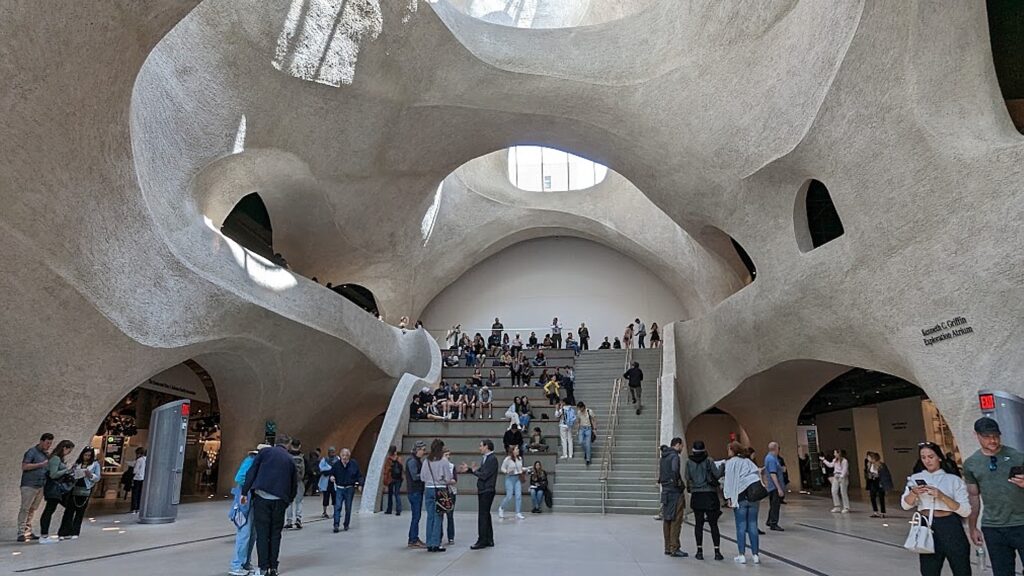
A broad, grand staircase on the east side of the Griffin Atrium, on axis with the entrance, is designed with one side as seating steps, featuring deep, walnut-covered treads and high risers that is popular for visitors to gather for rest and conversation and programs.
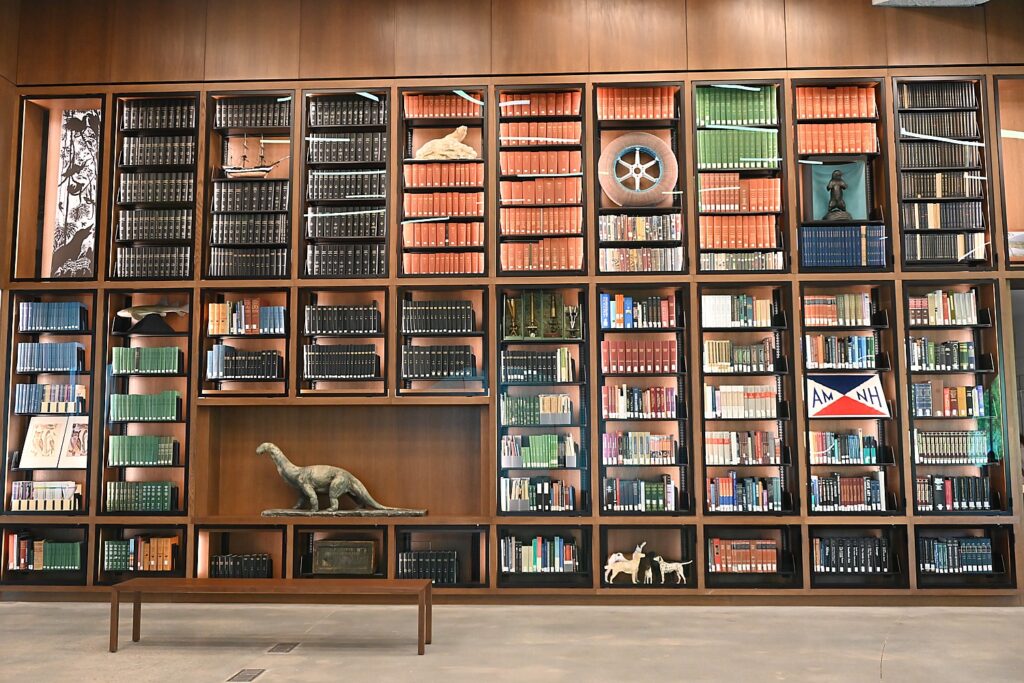
I discover the Museum’s David S. and Ruth L. Gottesman Research Library and Learning Center, which houses one of the largest and most important natural history libraries in the world. An elegant new Reading Room on the fourth floor of the Gilder Center, with sweeping views to the west, is an oasis of tranquility with comfortable sofas, sitting areas and reading areas. With dedicated spaces for researchers and small meetings, as well as an alcove gallery for rotating exhibits, this new learning center serves as an intellectual hub for research, education, and convening, connecting visitors to its resources as never before. As part of expanded access to the Gottesman Library’s collections for visitors, the alcove gallery showcases materials from the Rare Book Collection and other holdings. The inaugural exhibit, What’s in a Name?, explores scientific nomenclature through rare books, art, and current research on insects.
“The Gilder Center for Science, Education, and Innovation is a glorious new facility that fulfills a critical need at a critical time: to help visitors to understand the natural world more deeply, to appreciate that all life is interdependent, to trust science, and to be inspired to protect our precious planet and its myriad life forms,” said Ellen Futter, President Emerita of the American Museum of Natural History. “This opening represents a milestone moment for the Museum in its ongoing efforts to improve science literacy while highlighting for our visitors everything the Museum has to offer, and sparking wonder and curiosity.”
“The Gilder Center is designed to invite exploration and discovery that is not only emblematic of science, but also such a big part of being human. It aims to draw everyone in—all ages, backgrounds, and abilities—to share the excitement of learning about the natural world,” said Jeanne Gang, founding principal and partner of Studio Gang. “Stepping inside the large day-lit atrium, you are offered glimpses of the different exhibits on multiple levels. You can let your curiosity lead you. And with the many new connections that the architecture creates between buildings, it also improves your ability to navigate the Museum’s campus as a whole.”
Among its 33 connections, the Gilder Center links to some of the Museum’s most iconic Halls, including to the Allison and Roberto Mignone Halls of Gems and Minerals, connected on the first floor through the dazzling Yurman Family Crystalline Pass, and to the Hall of Vertebrate Origins on the fourth floor.
The fifth and sixth floors of the Gilder Center house the Department of Ichthyology, including research spaces and specialized laboratories. These facilities complement the building’s new collections storage which houses the Museum’s ichthyology collection with more than 2.5 million research specimens, one of the world’s largest. The Museum’s Education Department is also located on these floors. (Its Richard Gilder Graduate School, the Museum offers two of the only free-standing, degree-granting programs of their kind at any museum in the U.S.: the Ph.D. program in Comparative Biology and the Master of Arts in Teaching (MAT) Earth Science residency program.)
You can spend eons roaming about here, so it is good that there is also a new table-service restaurant within the Gilder serving contemporary American cuisine with regional and global influences, as well as beverages showcasing local breweries and vineyards (the main museum also has the lower level cafeteria). There are also two sensational gift shops in the Center.
For anyone who hasn’t been to a museum of the quality like AMNH in awhile and expect static, boring displays with complex notes, this is leaps, bounds and lightyears beyond. Even the iconic dinosaur displays have interactive, engaging elements and make key points that are most relevant to our lives. You really feel you are having a conversation with sheer genius. “State of the art” doesn’t begin to describe it.
The development of the Gilder Center facilities and exhibitions involved nearly every department in the Museum, from operations and exhibition to education and science. The core project team also includes Arup, Atelier Ten, Bergen Street Studio, BuroHappold Engineering, Davis Brody Bond (executive architect), Design & Production Museum Studio, Event Network, Hadley Exhibits, Langan Engineering, Ralph Applebaum Associates, Reed Hilderbrand, Tamschick Media+Space, AECOM Tishman, Venable LLP, and Zubatkin Owner Representation.
And when you think about it, what is so remarkable about AMNH is how what is contained here spans the entirety of history, culture, life, the natural world, the planet and even the known universe. And you get to explore it all.
All admission to the Museum is by timed entry and must be reserved online. Open daily, 10 am–5:30 pm. New York and New Jersey residents pay a suggested amount (all the attractions though are separately priced); standard pricing is Adults: $28 for general admission, $34 plus one, $39 plus all the attractions; Seniors and students are $22, $27, $31; Child 3-012 is $16, $20, $24.
The American Museum of Natural History, founded in 1869 with a dual mission of scientific research and science education, is one of the world’s preeminent scientific, educational, and cultural institutions. The Museum encompasses more than 40 permanent exhibition halls, galleries for temporary exhibitions, the Rose Center for Earth and Space including the Hayden Planetarium, and the Richard Gilder Center for Science, Education, and Innovation. The Museum’s scientists draw on a world-class permanent collection of more than 34 million specimens and artifacts, some of which are billions of years old, and on one of the largest natural history libraries in the world.
American Museum of Natural History,200 Central Park West, New York, NY 10024, 212-769-5606. Visit amnh.org for more information.
_____________________________
© 2023 Travel Features Syndicate, a division of Workstyles, Inc. All rights reserved. Visit goingplacesfarandnear.com, www.huffingtonpost.com/author/karen-rubin, and travelwritersmagazine.com/TravelFeaturesSyndicate/. Blogging at goingplacesnearandfar.wordpress.com and moralcompasstravel.info. Visit instagram.com/going_places_far_and_near and instagram.com/bigbackpacktraveler/ Send comments or questions to FamTravLtr@aol.com. Tweet @TravelFeatures. ‘Like’ us at facebook.com/KarenBRubin
